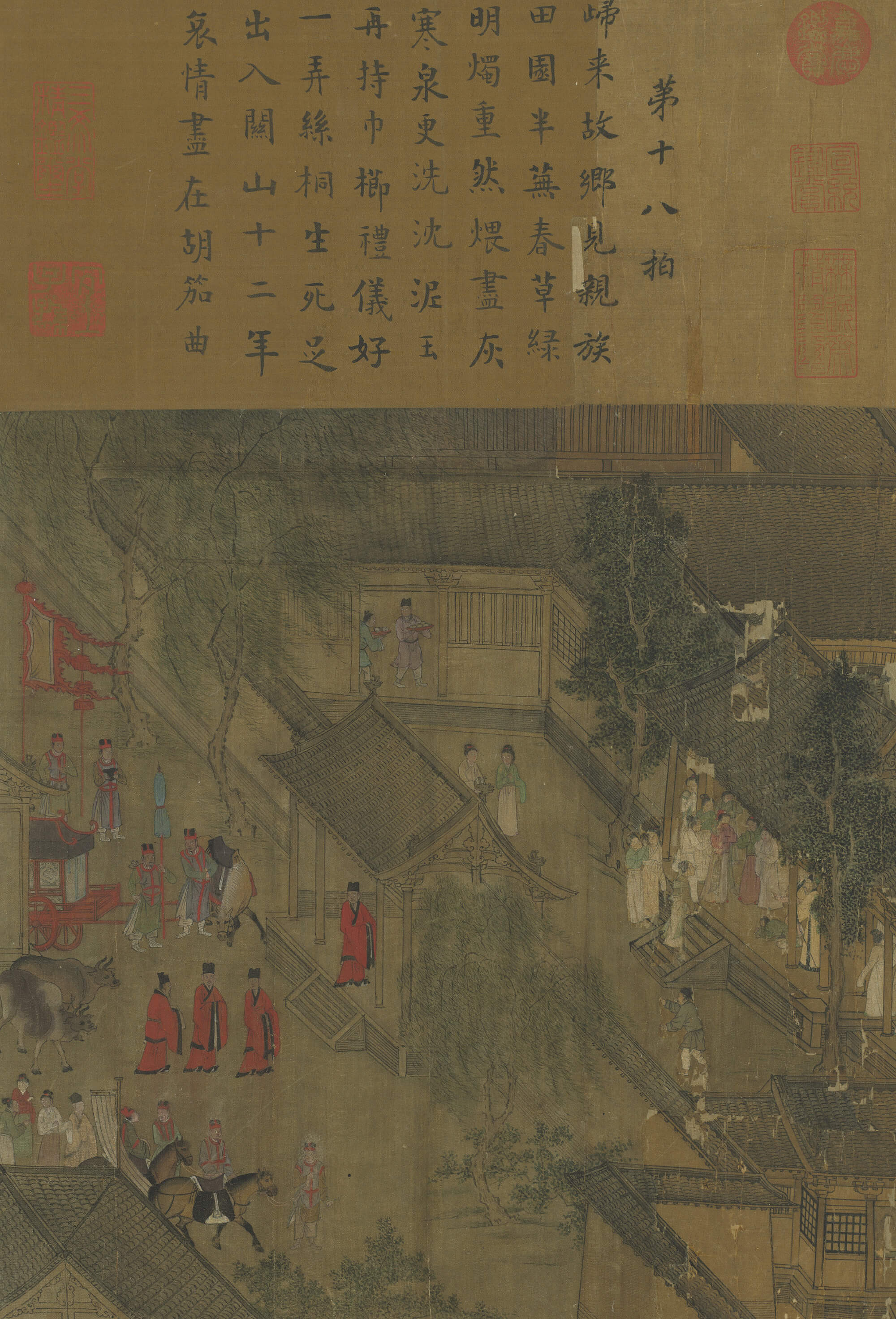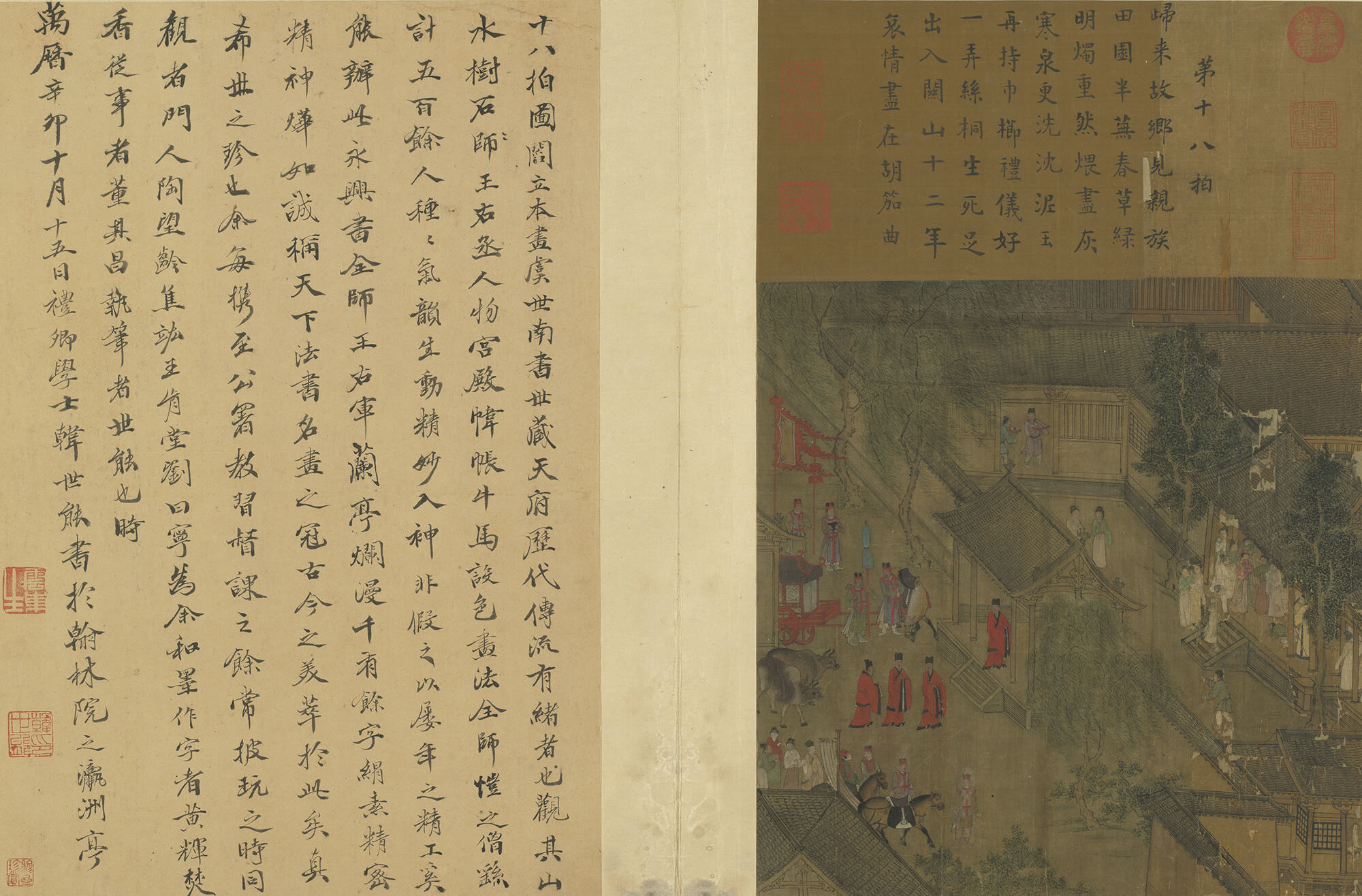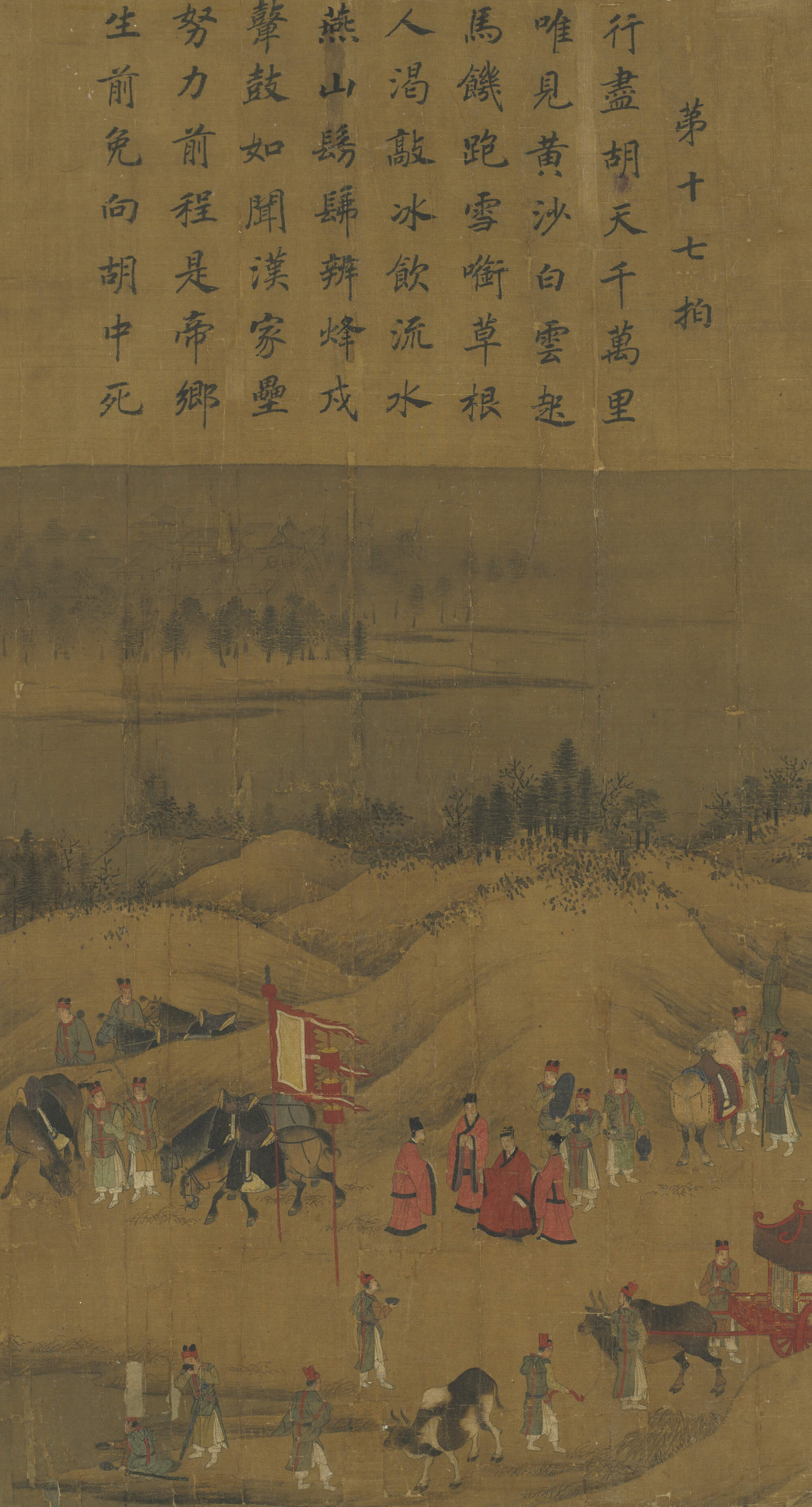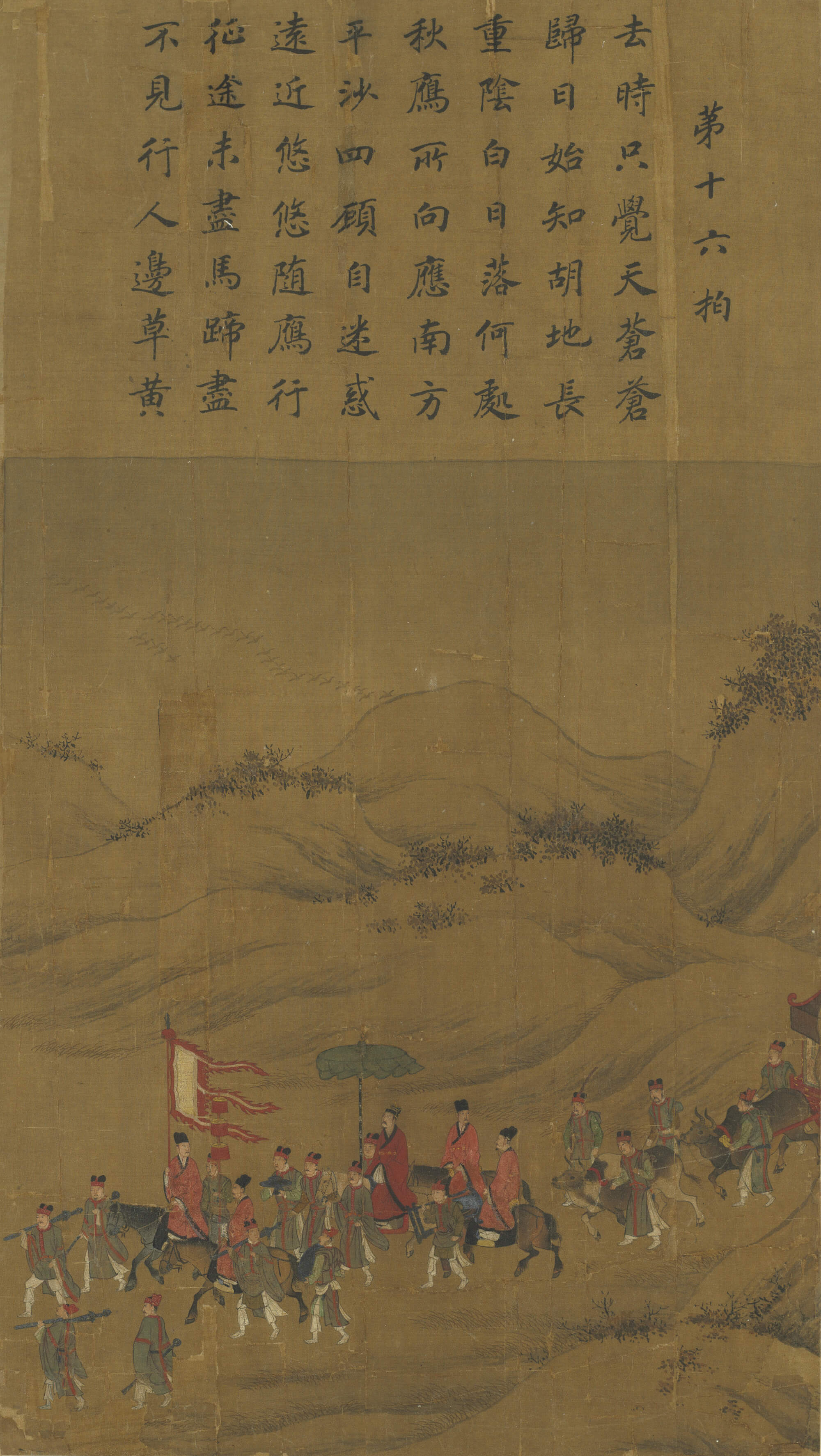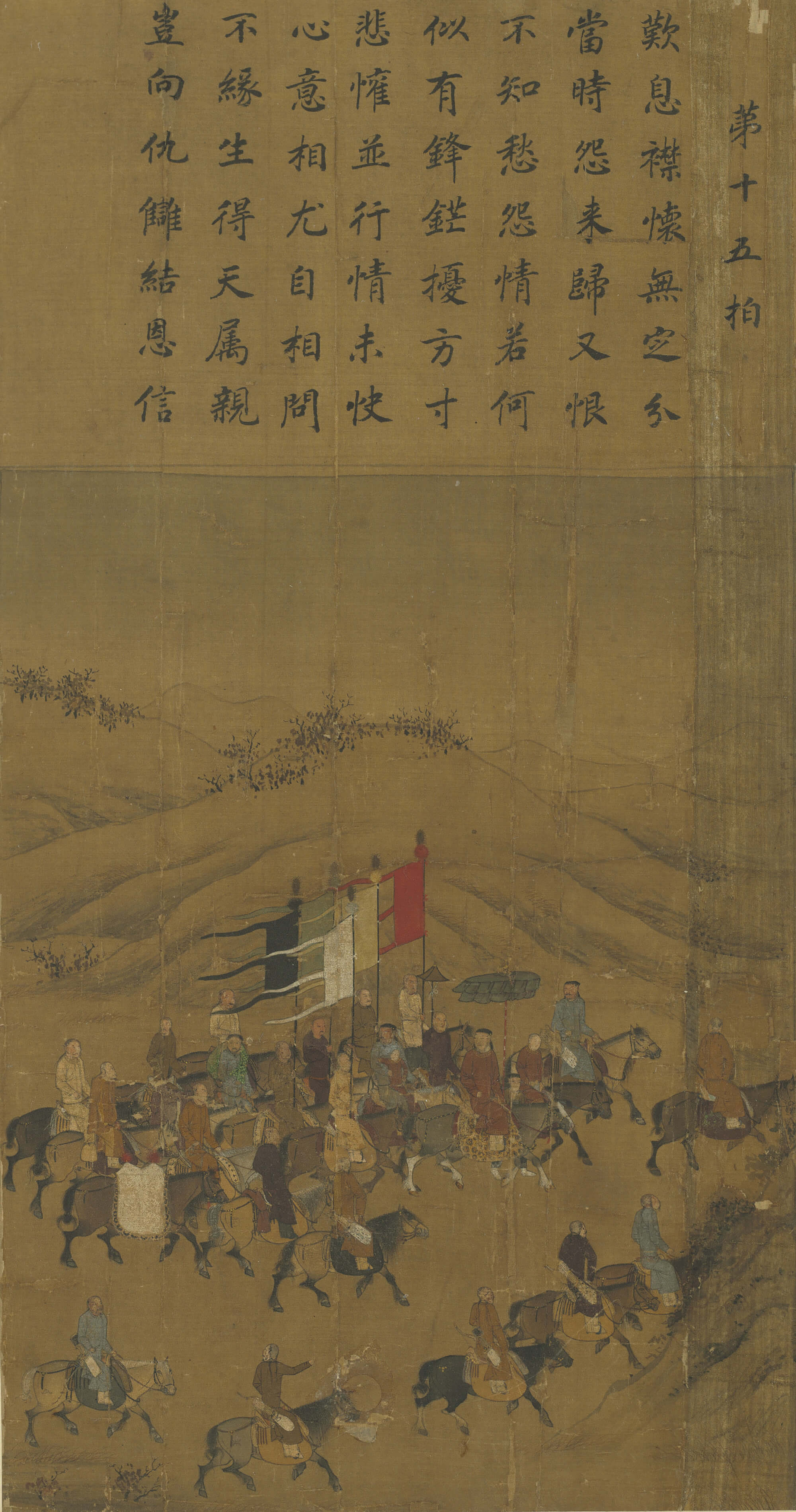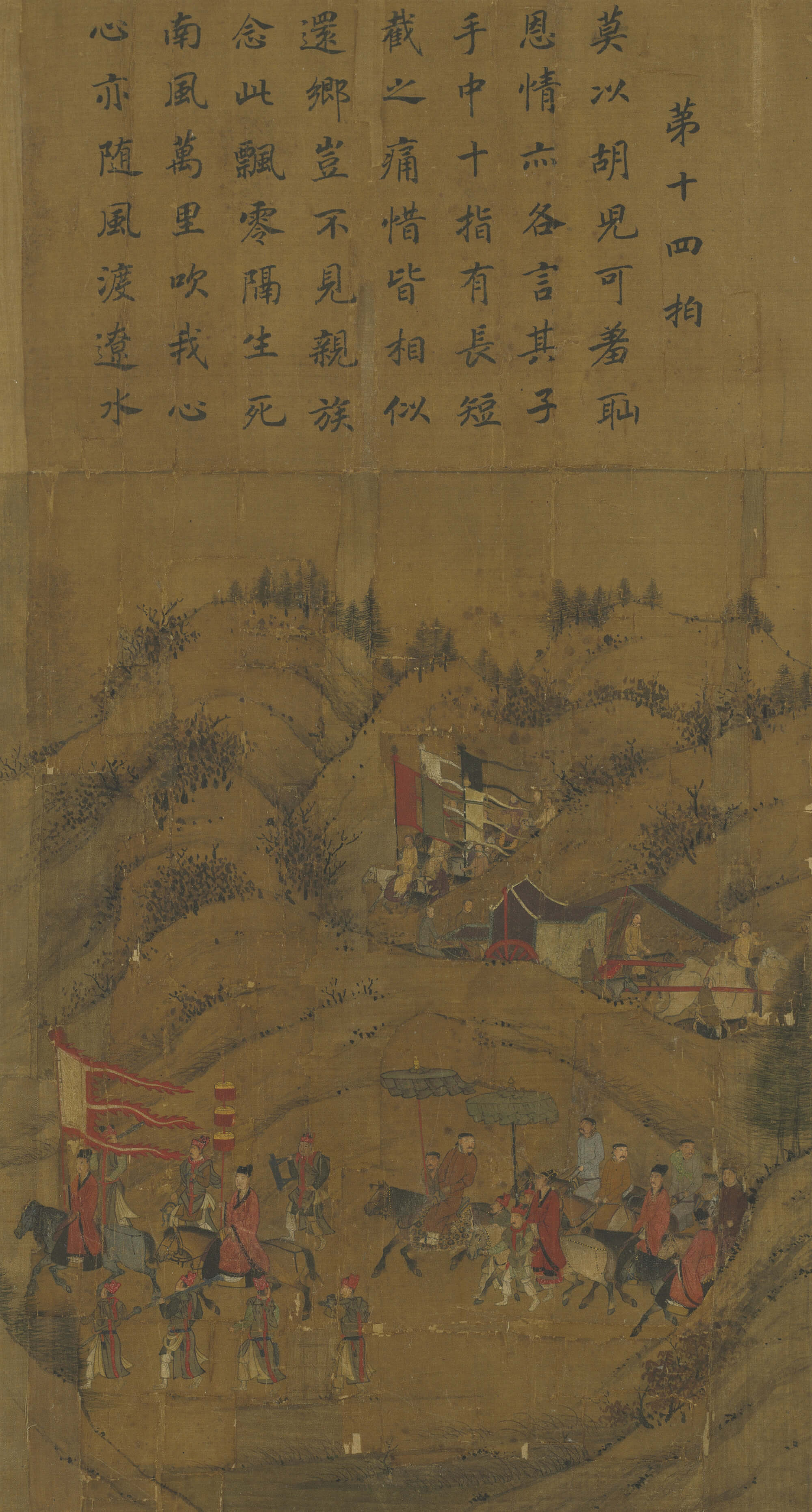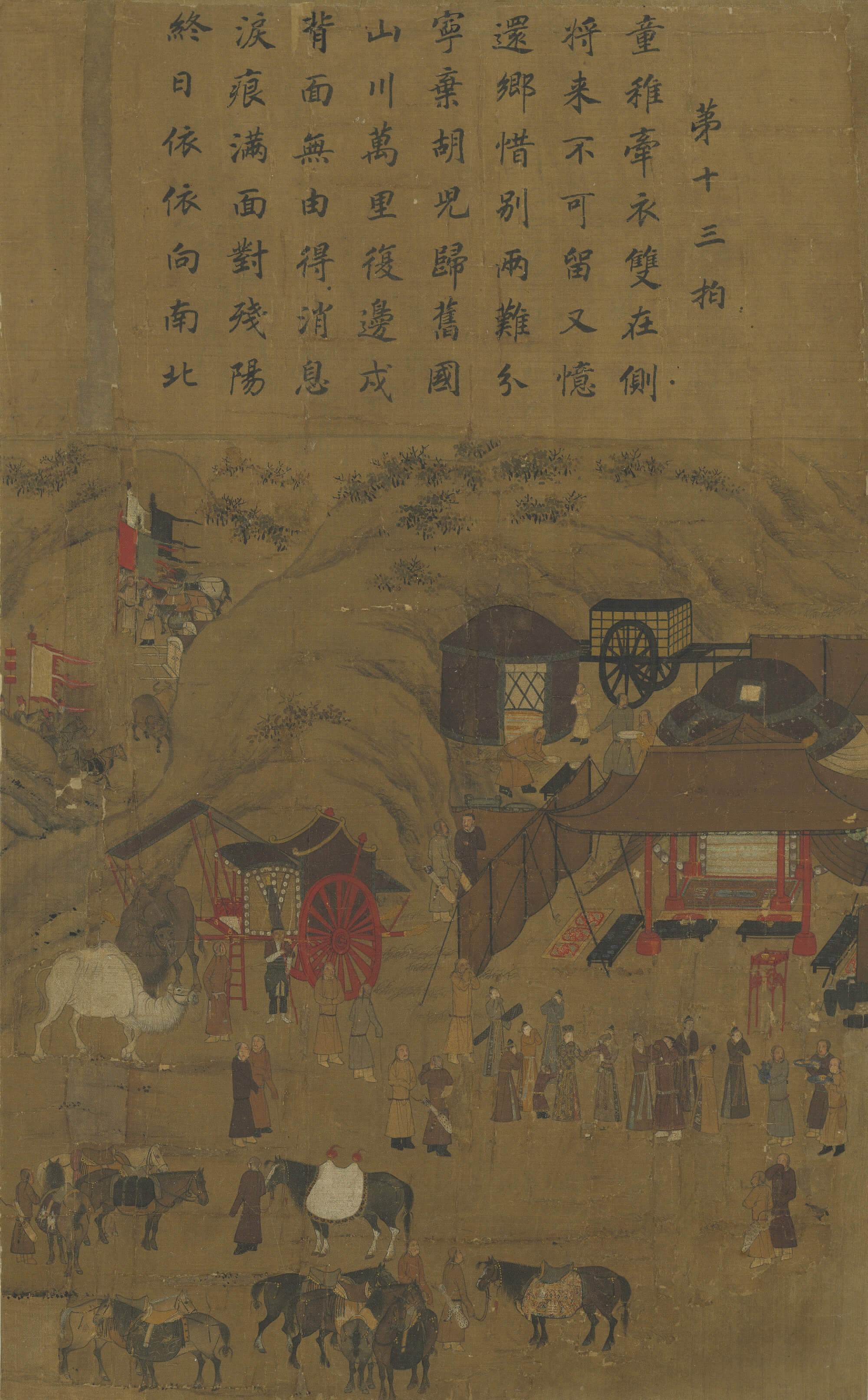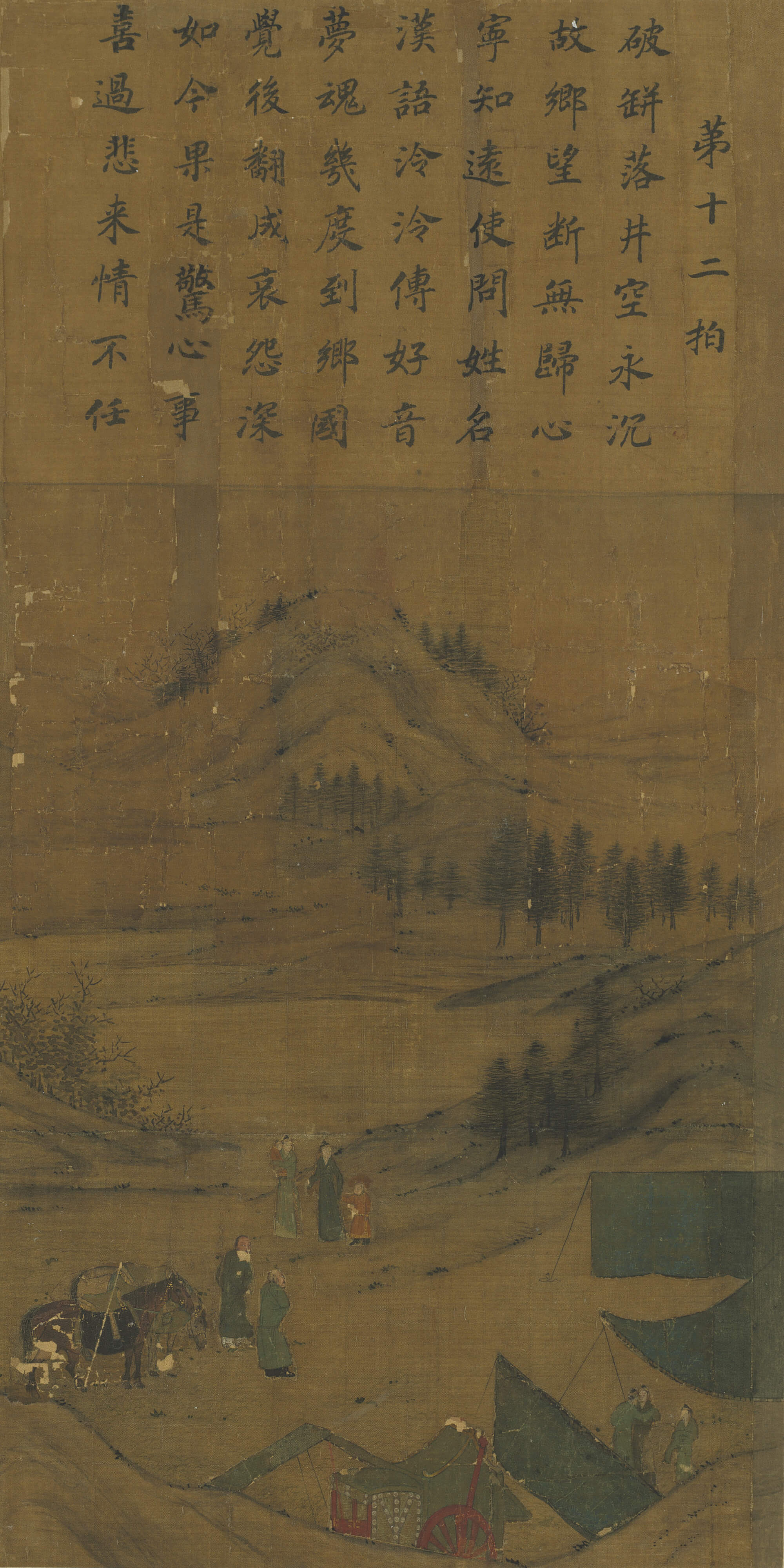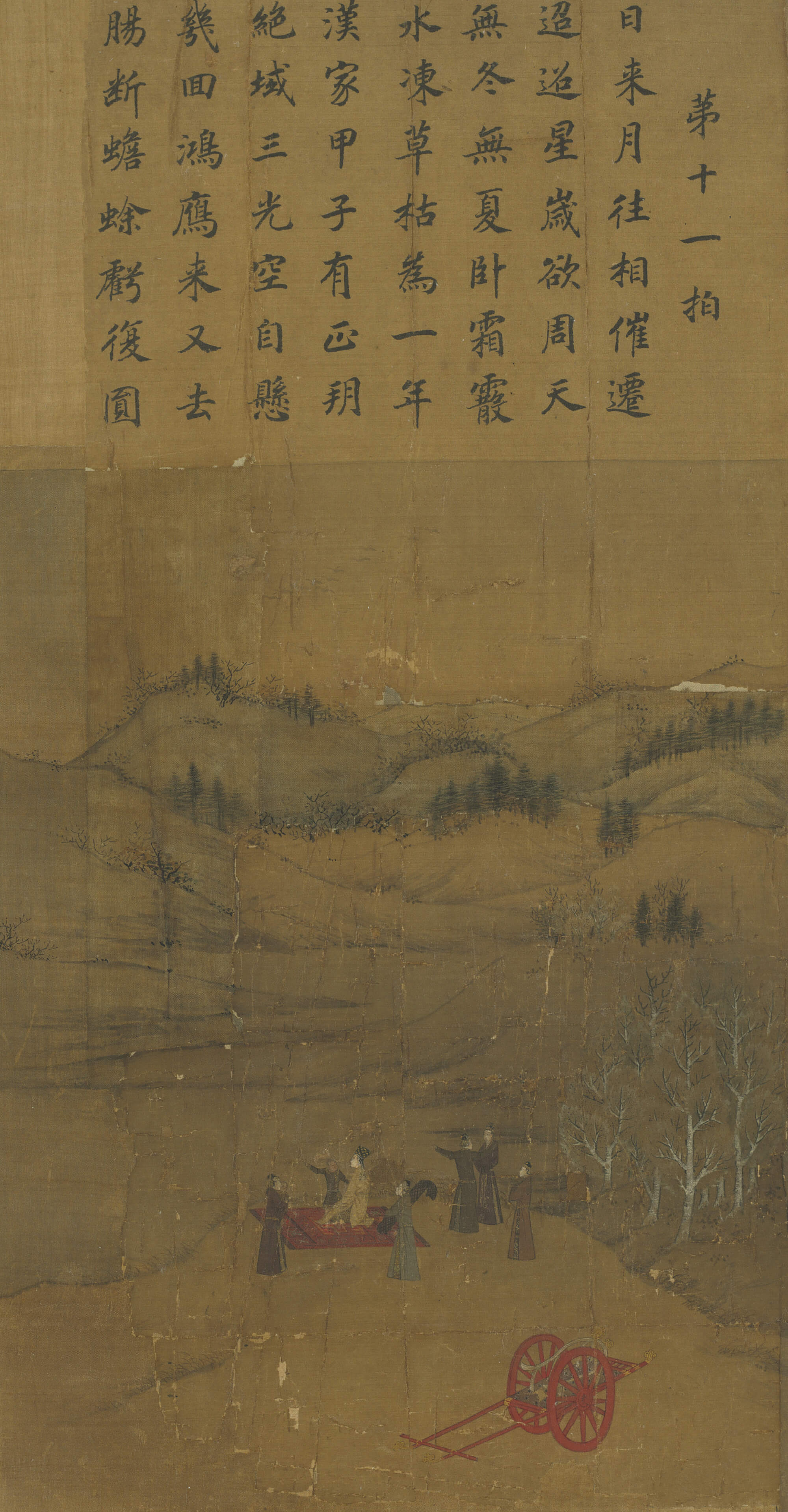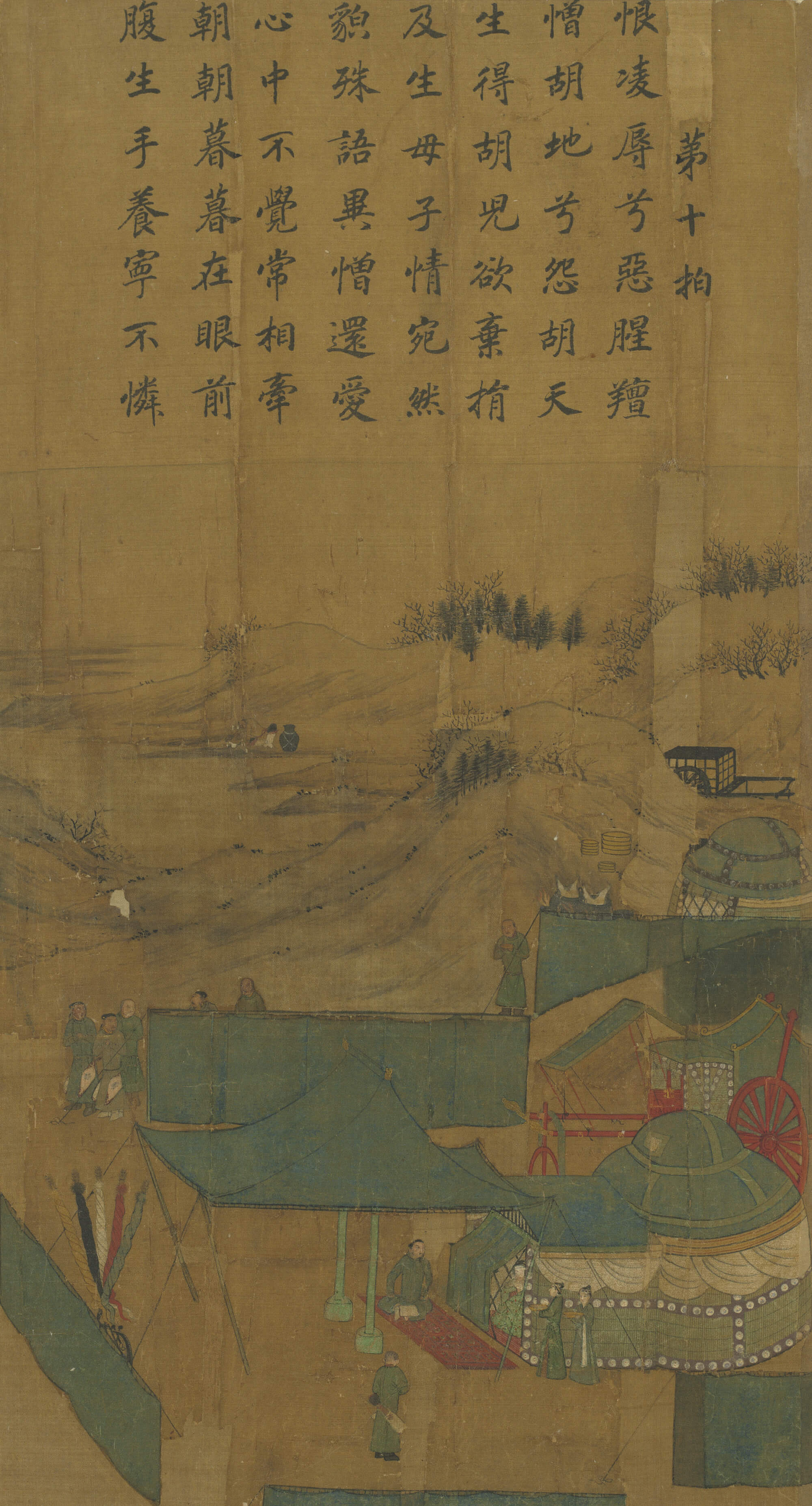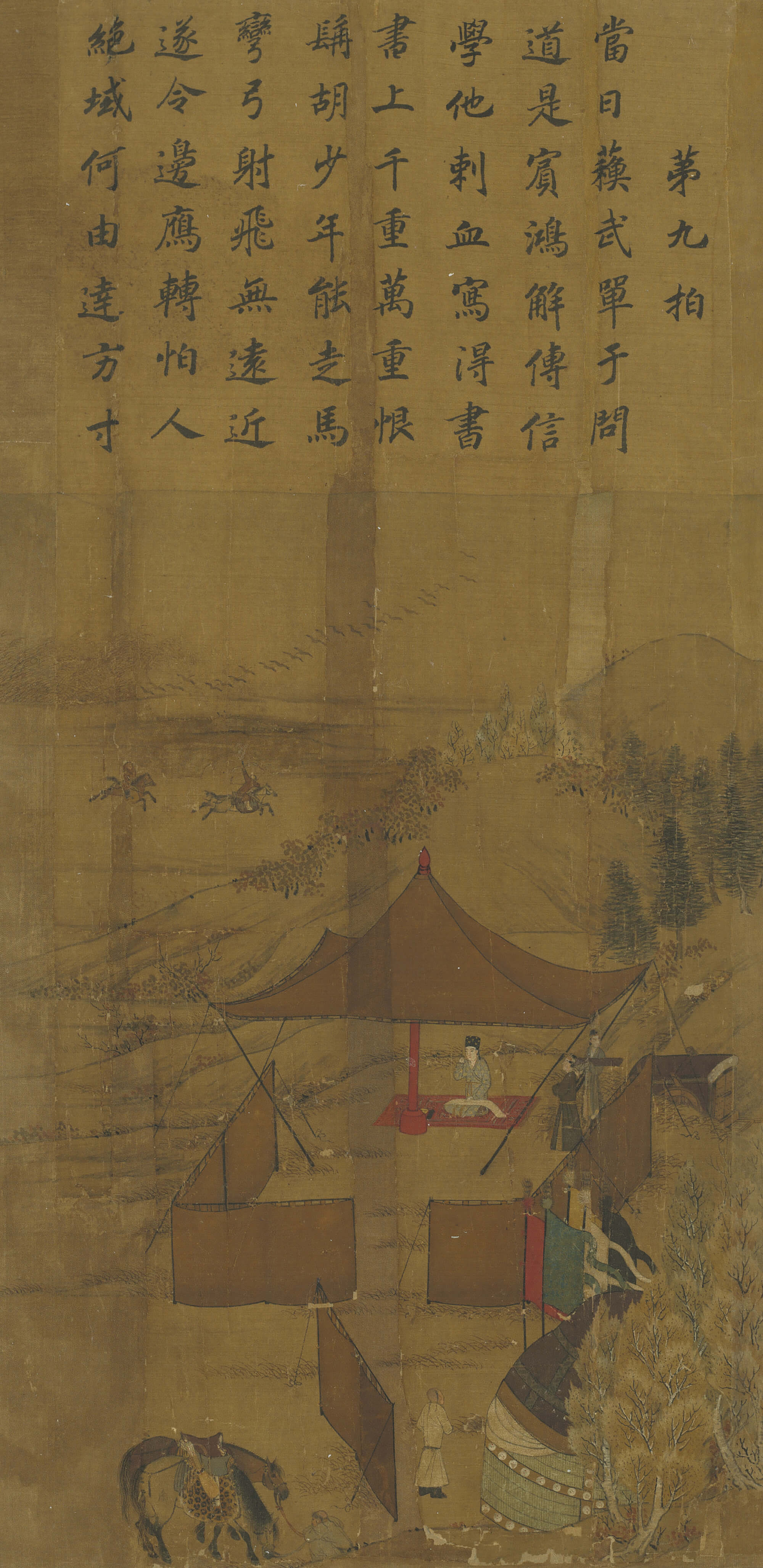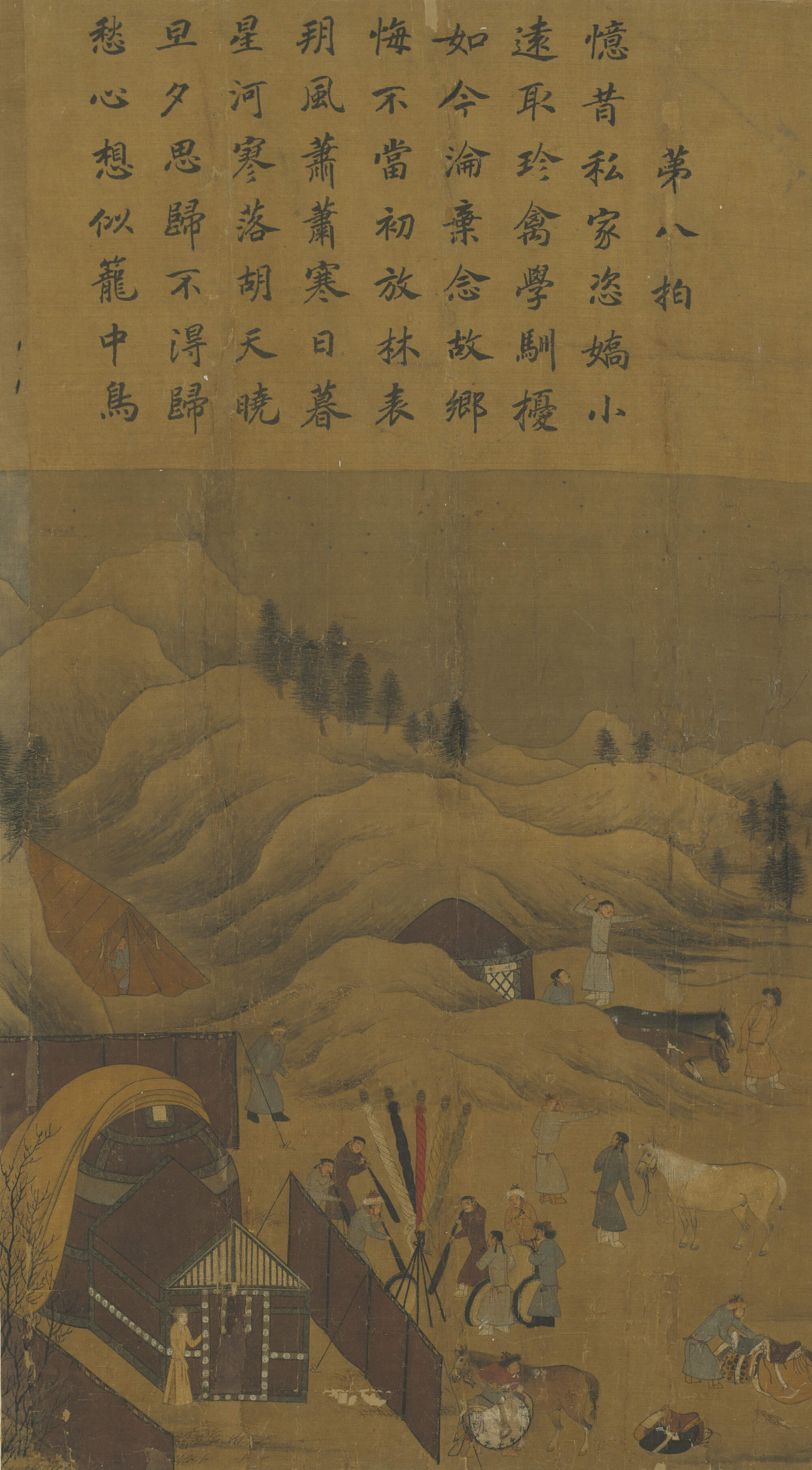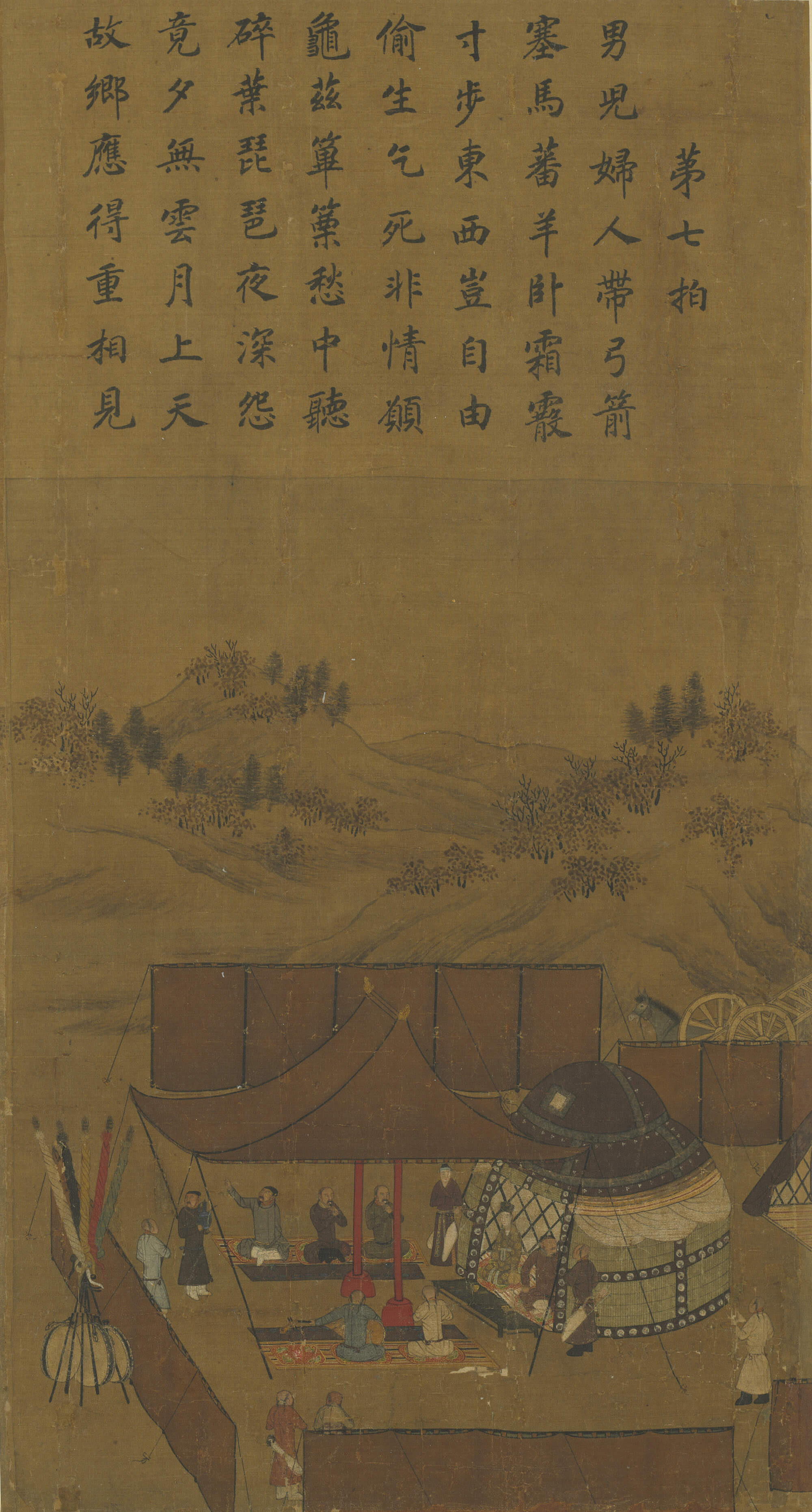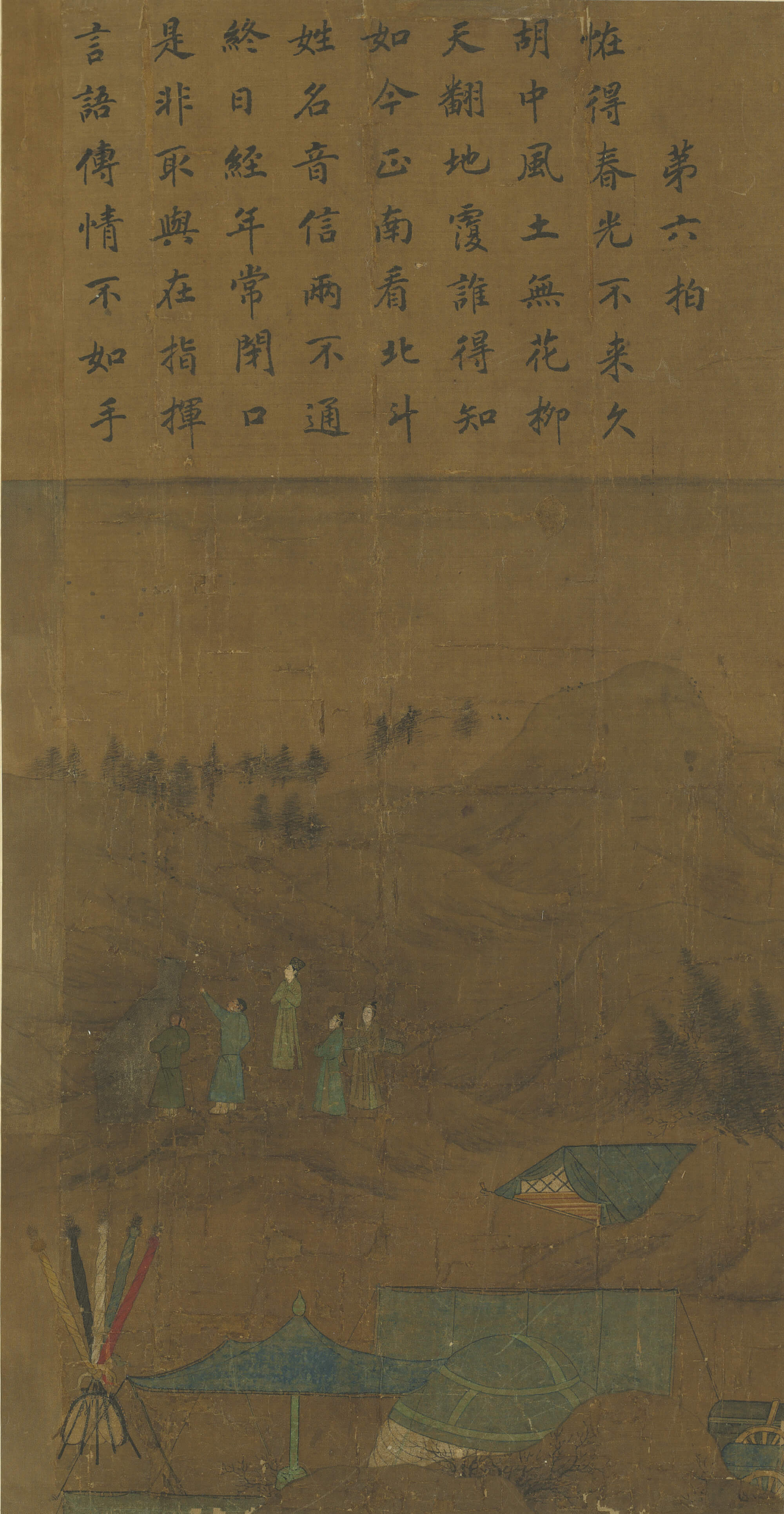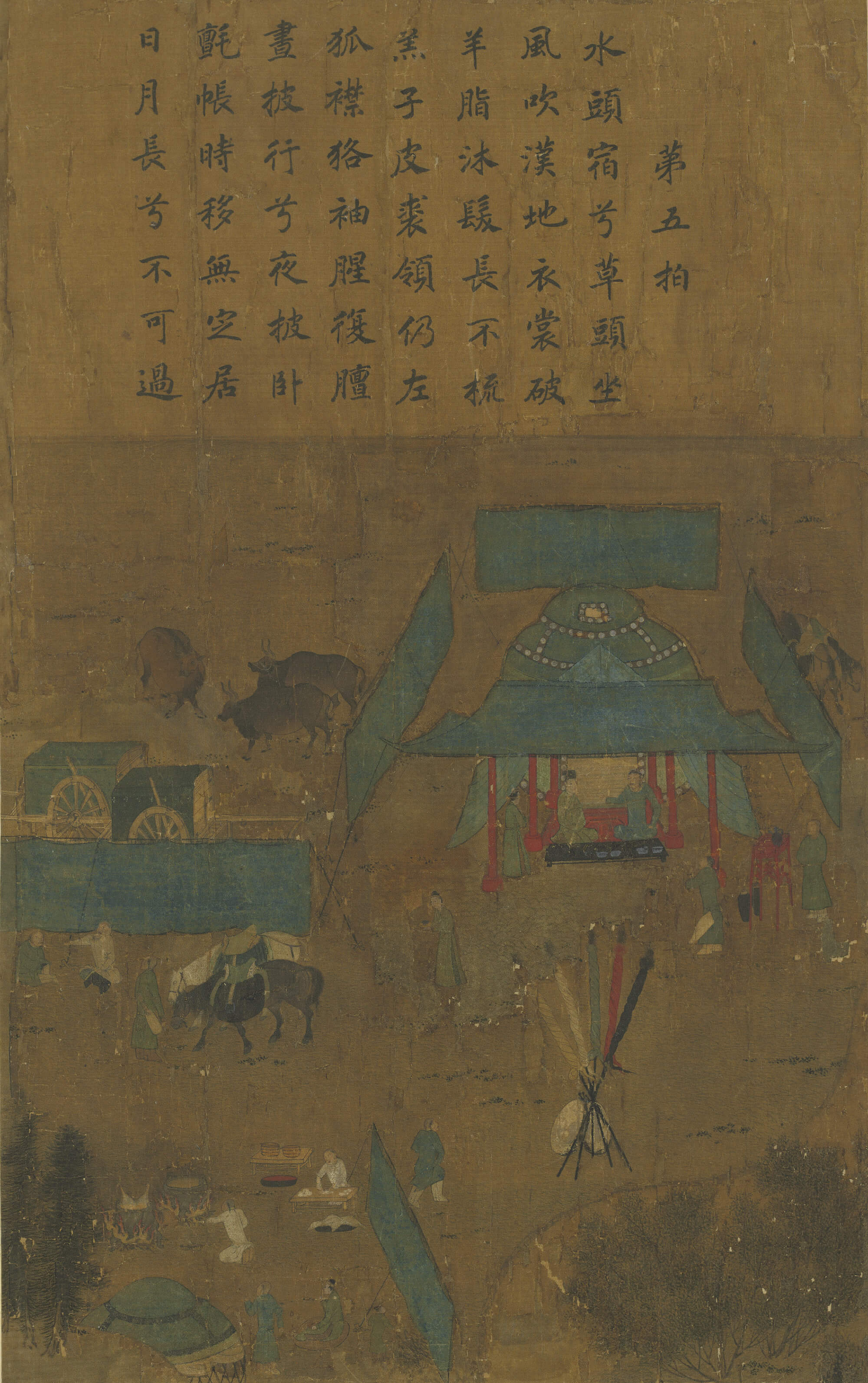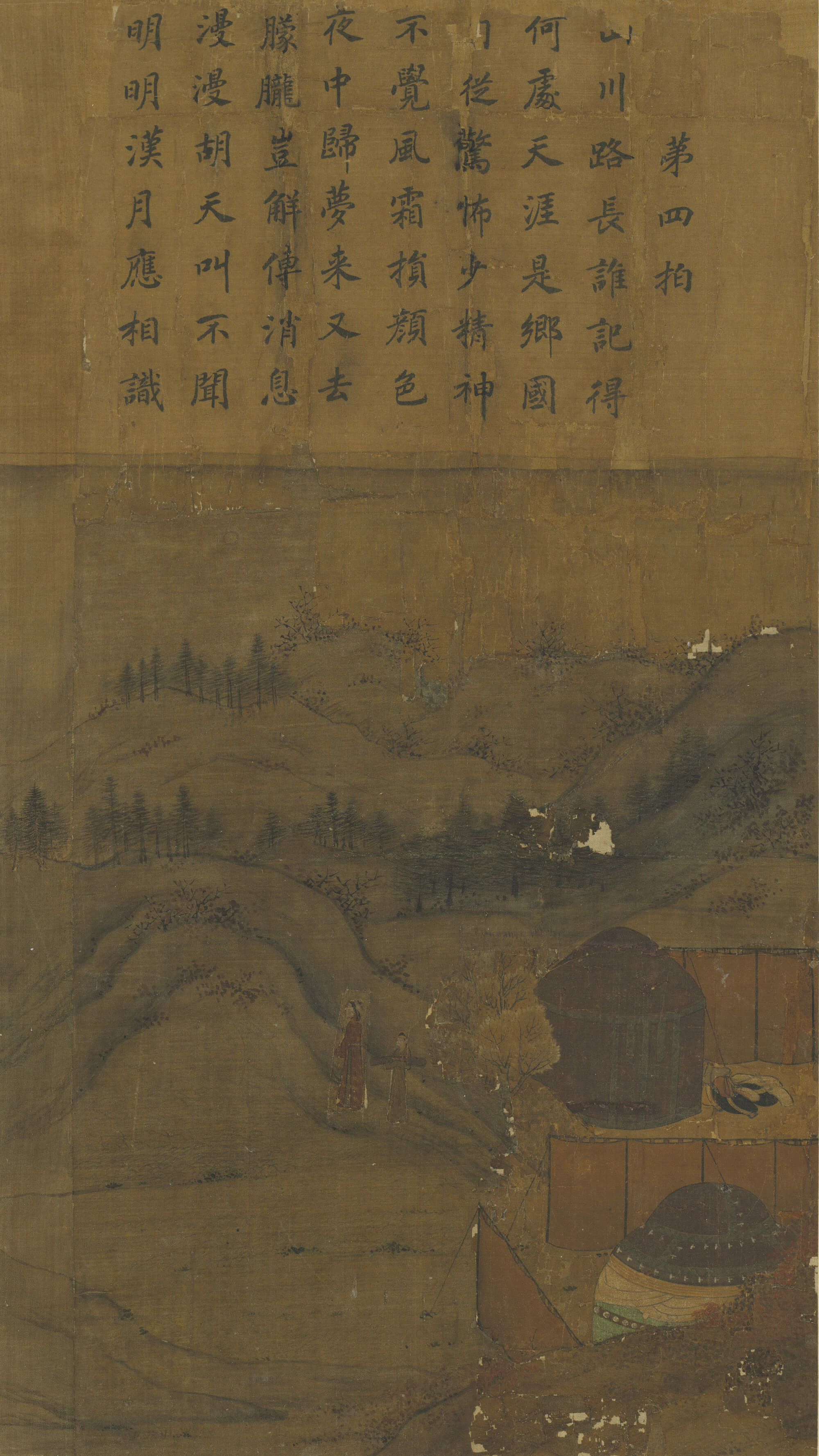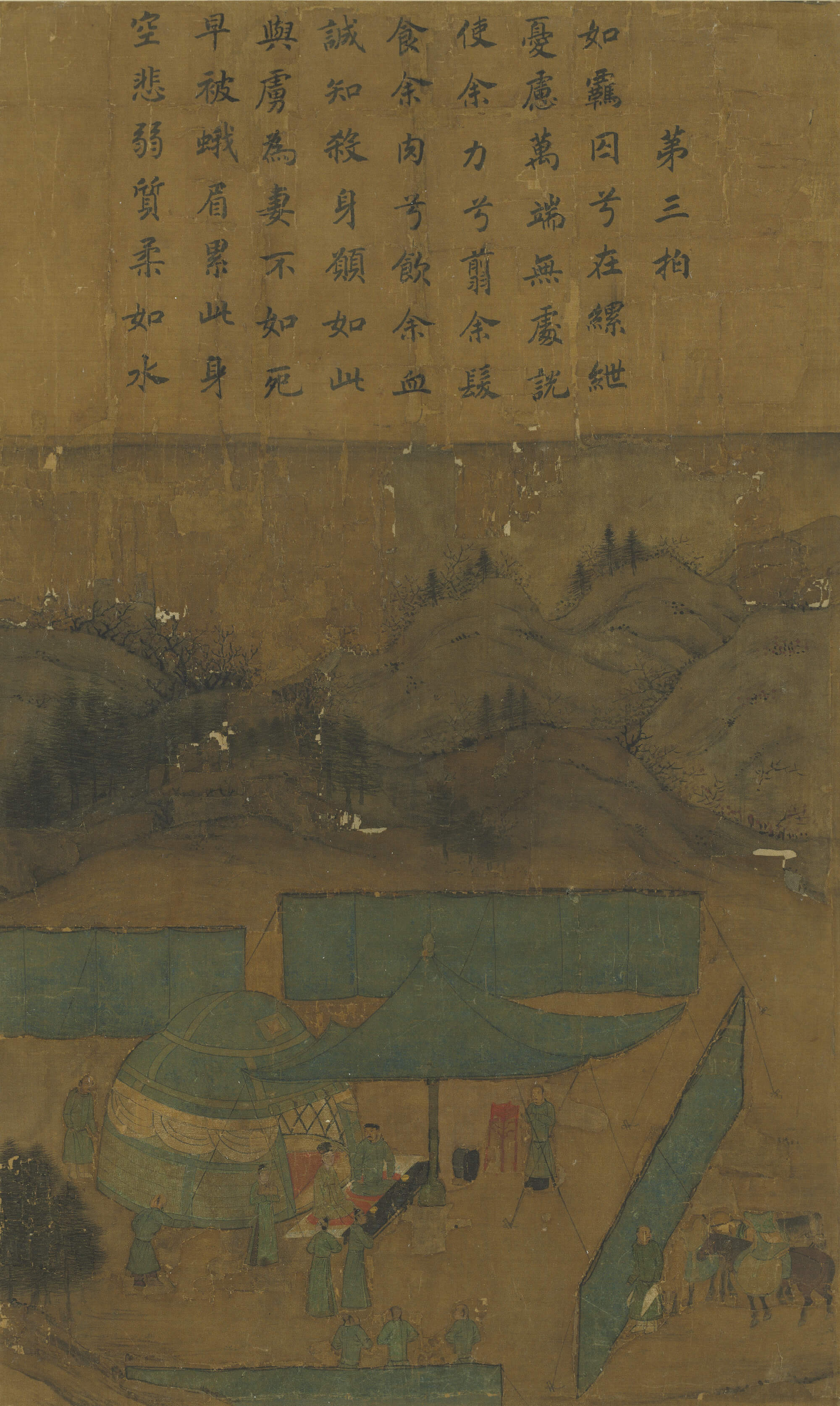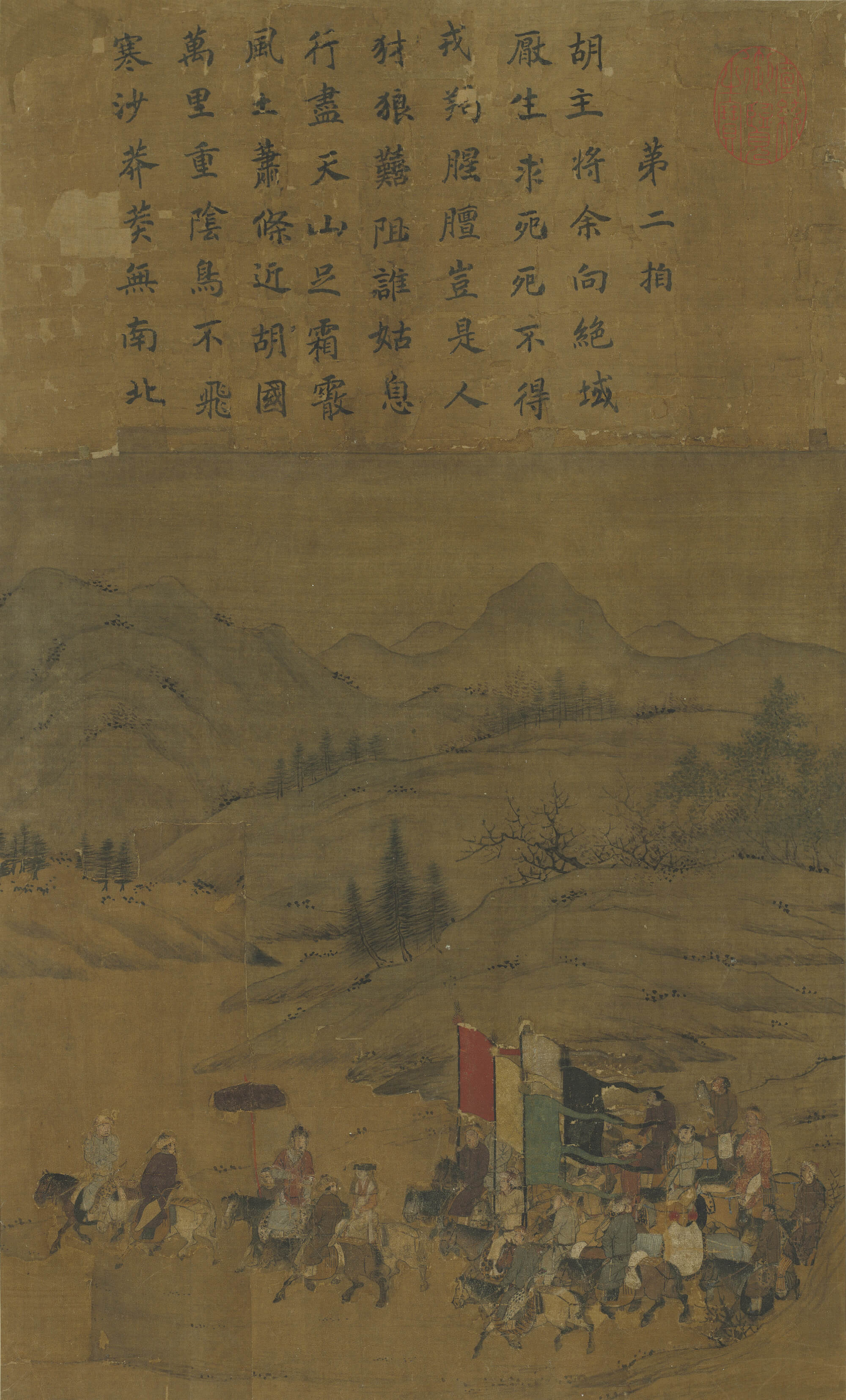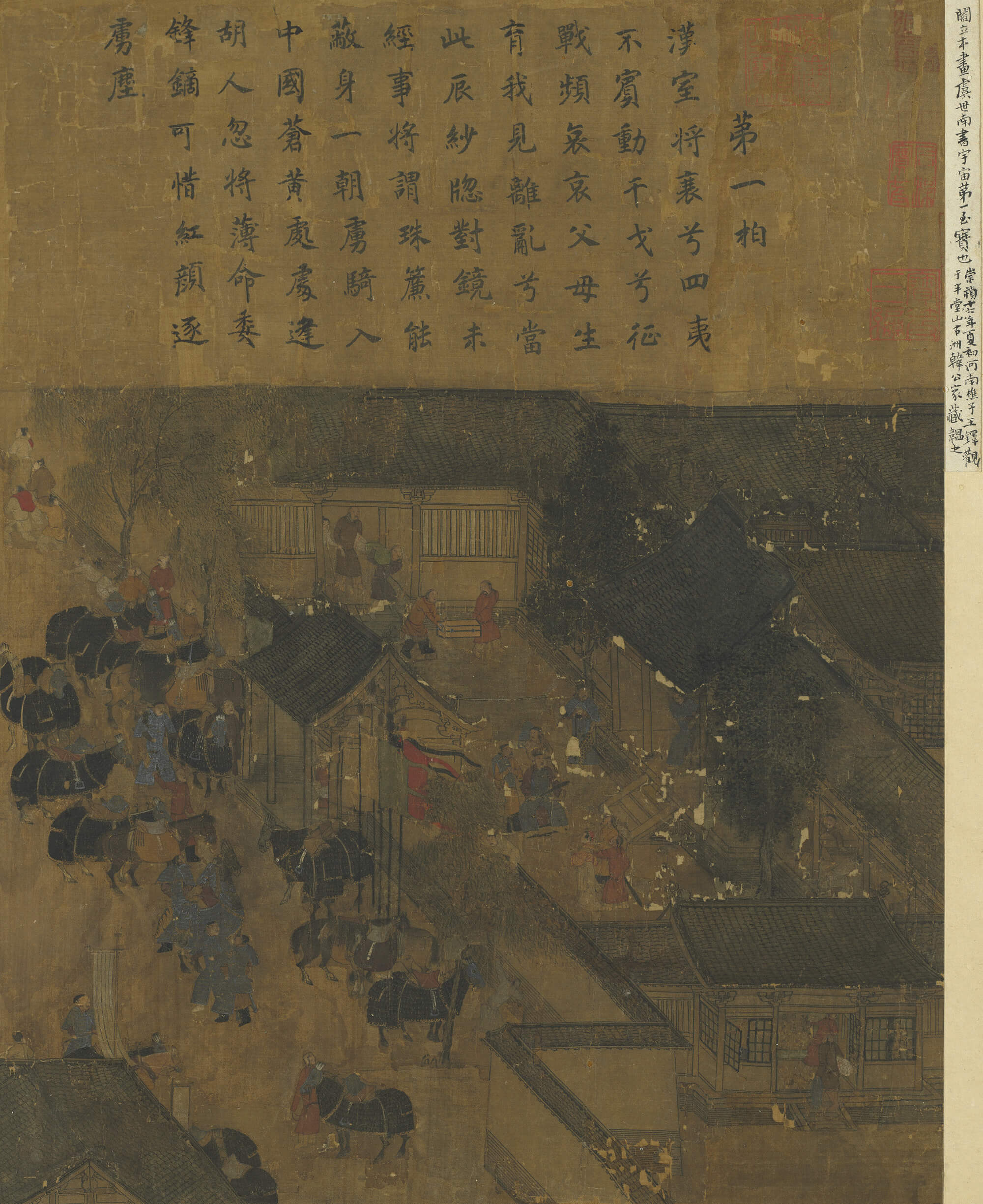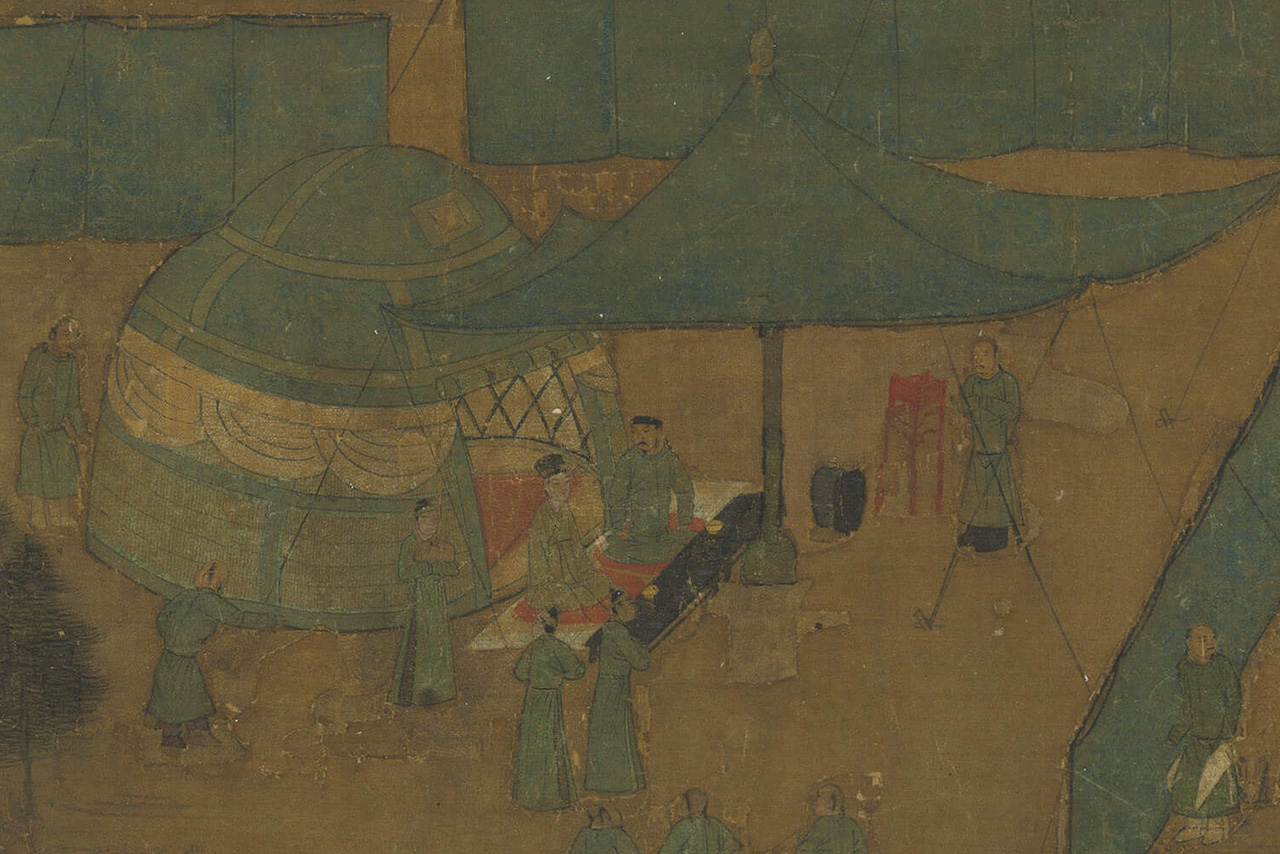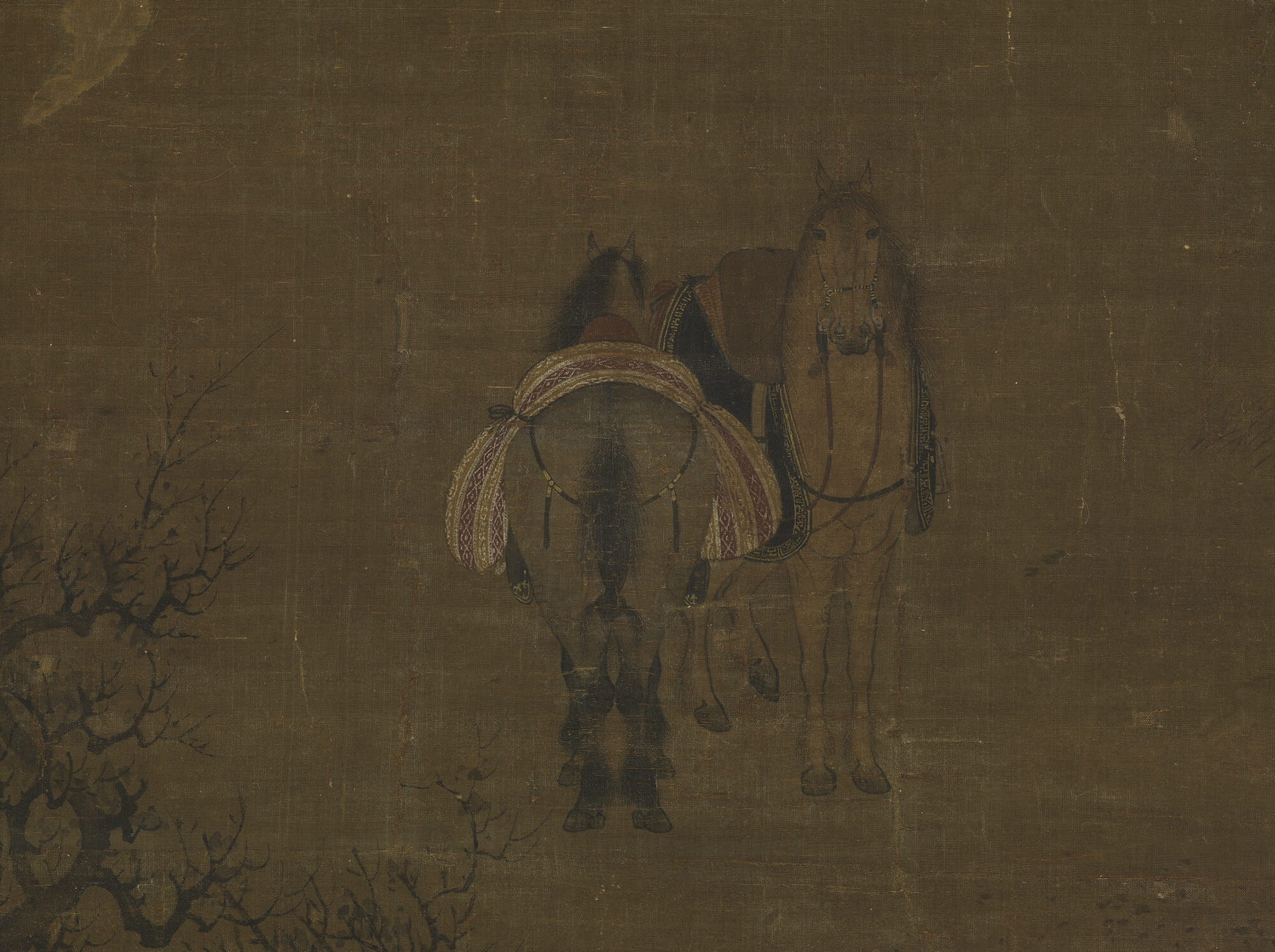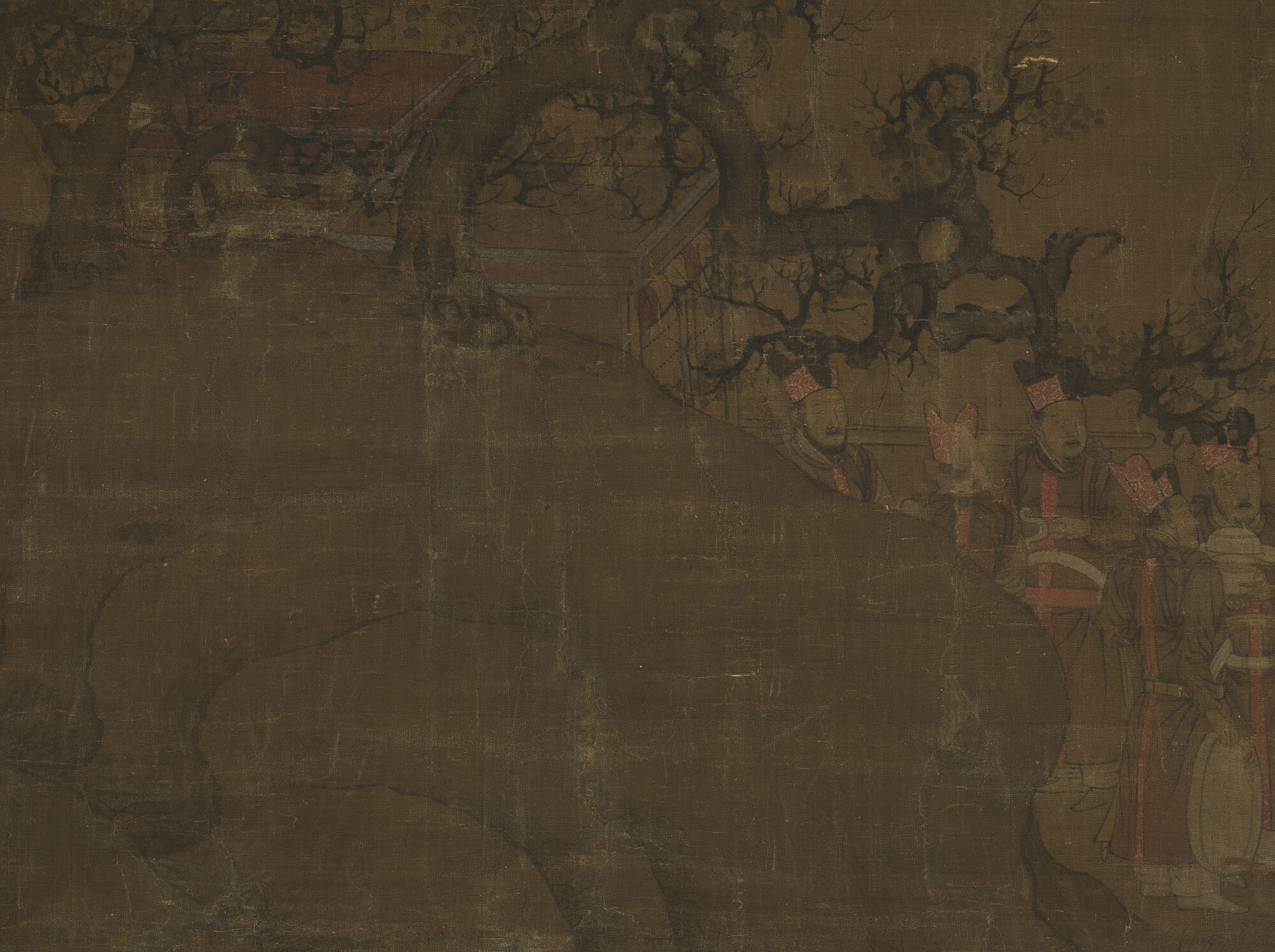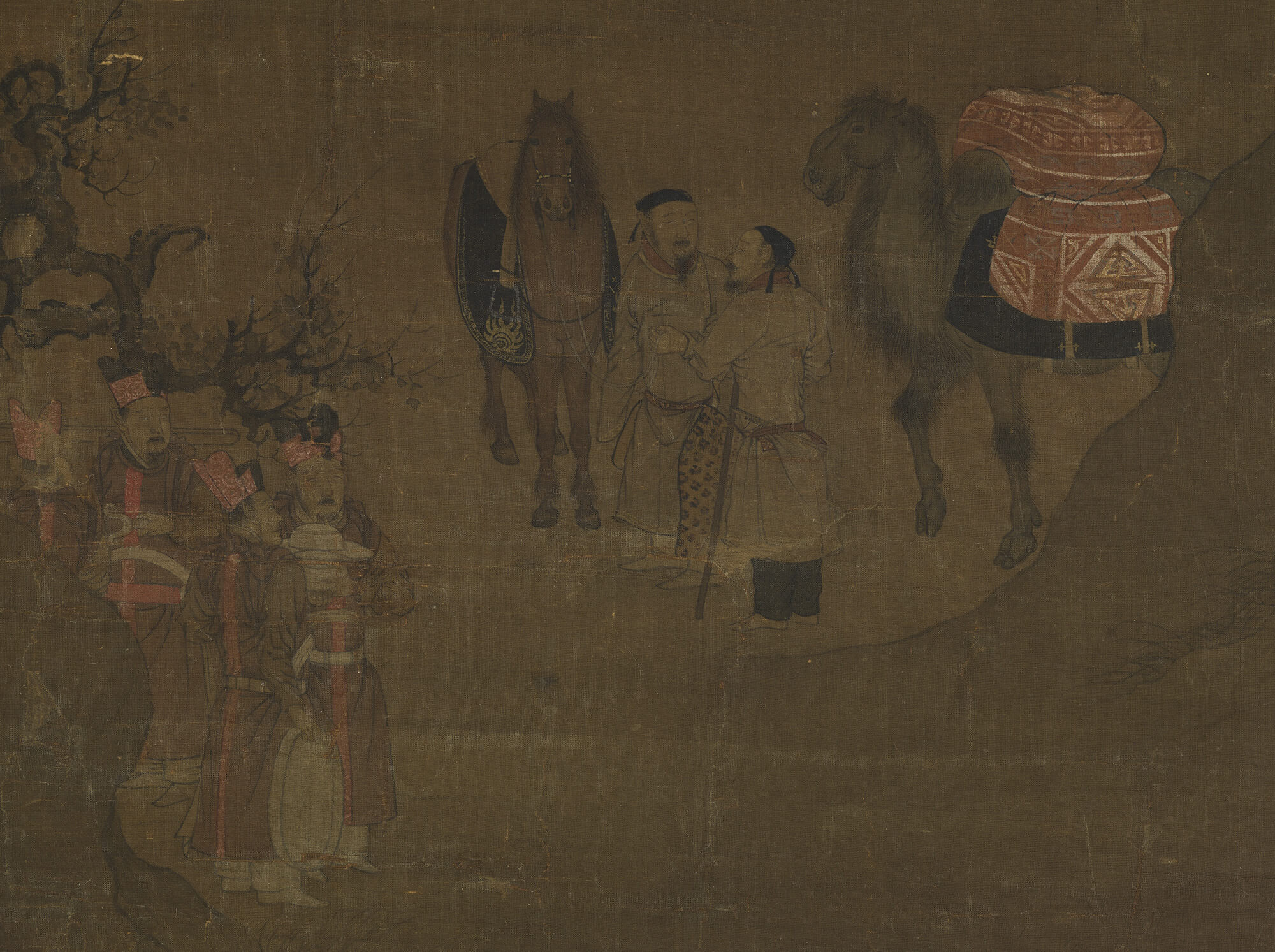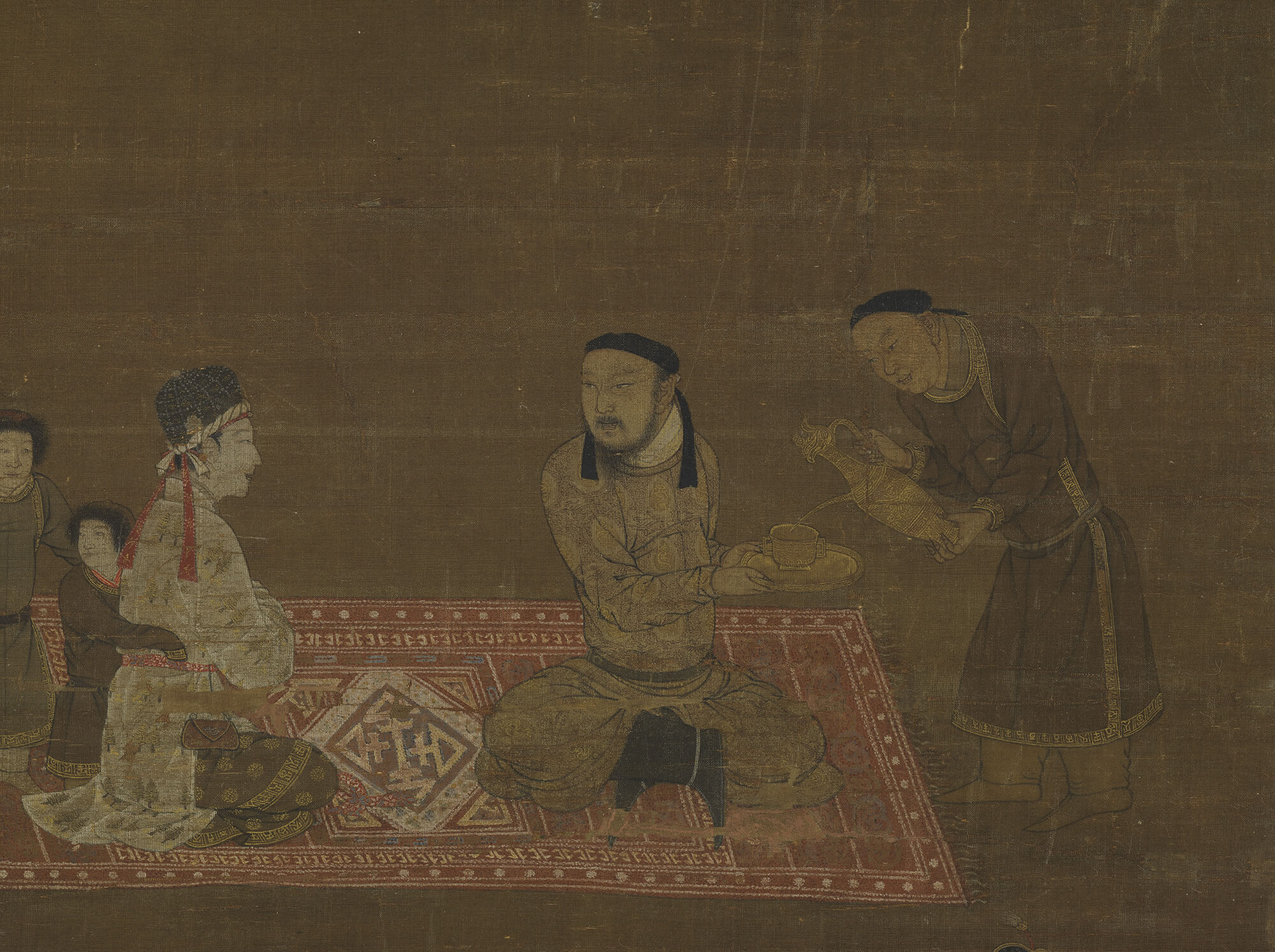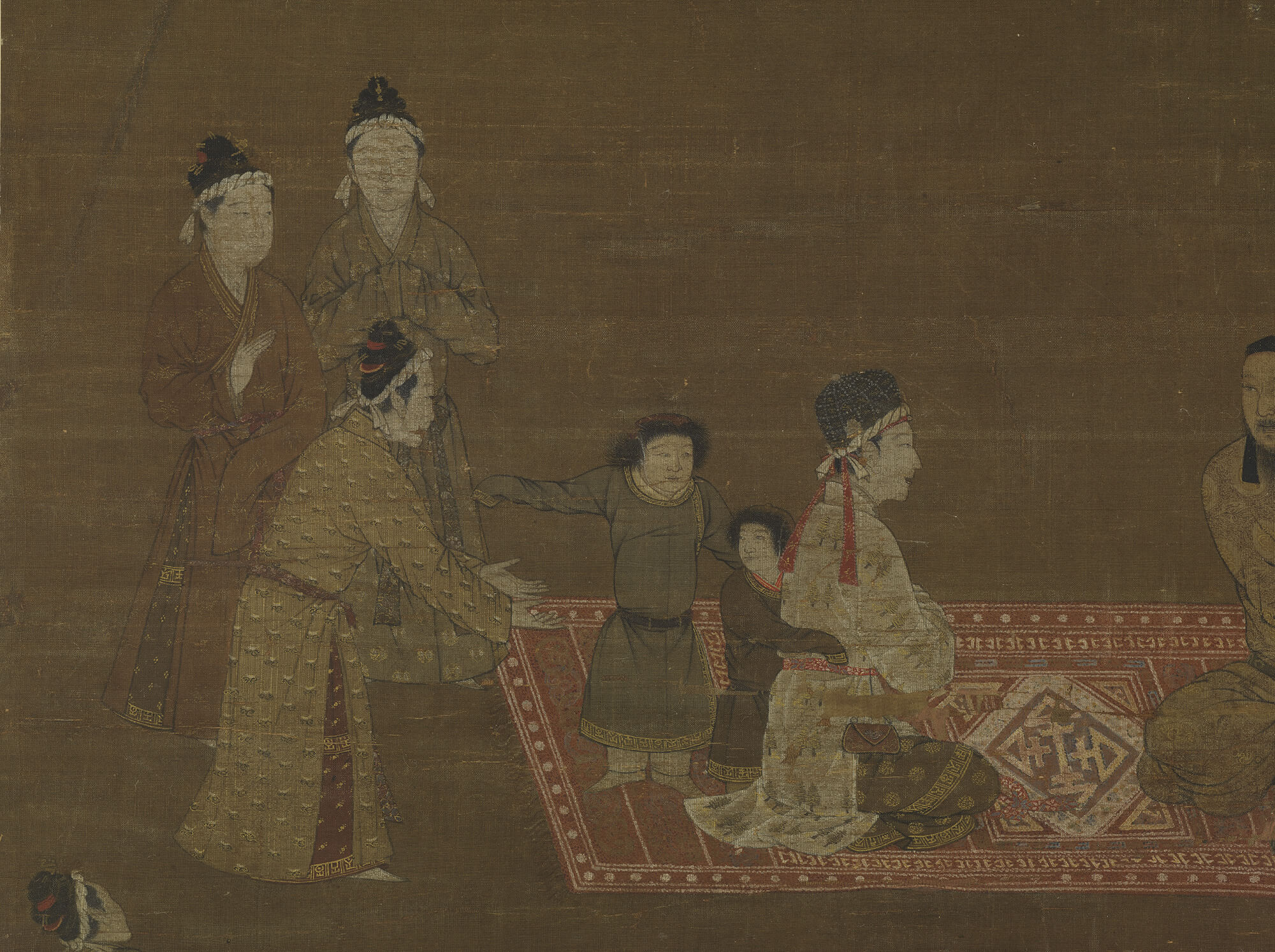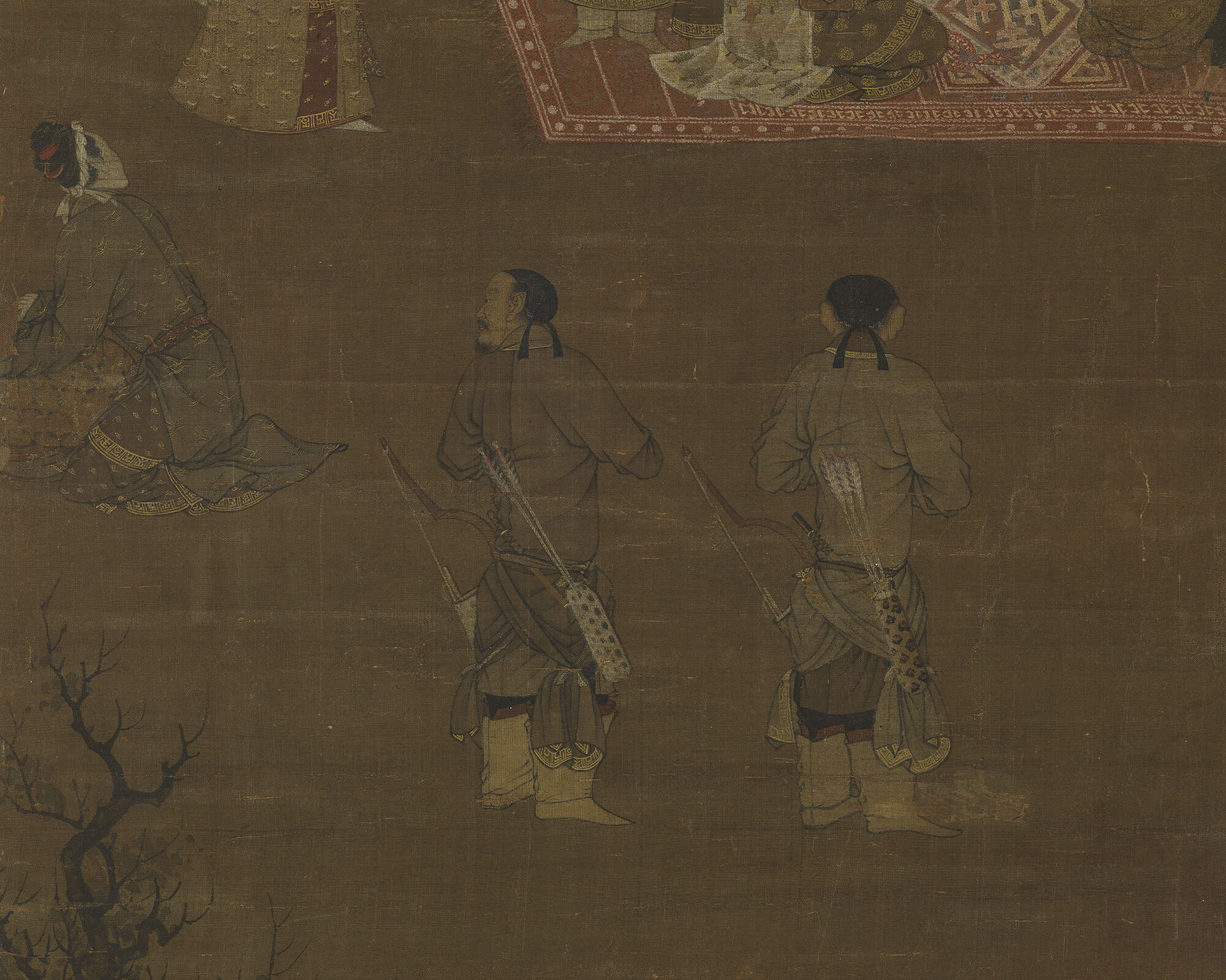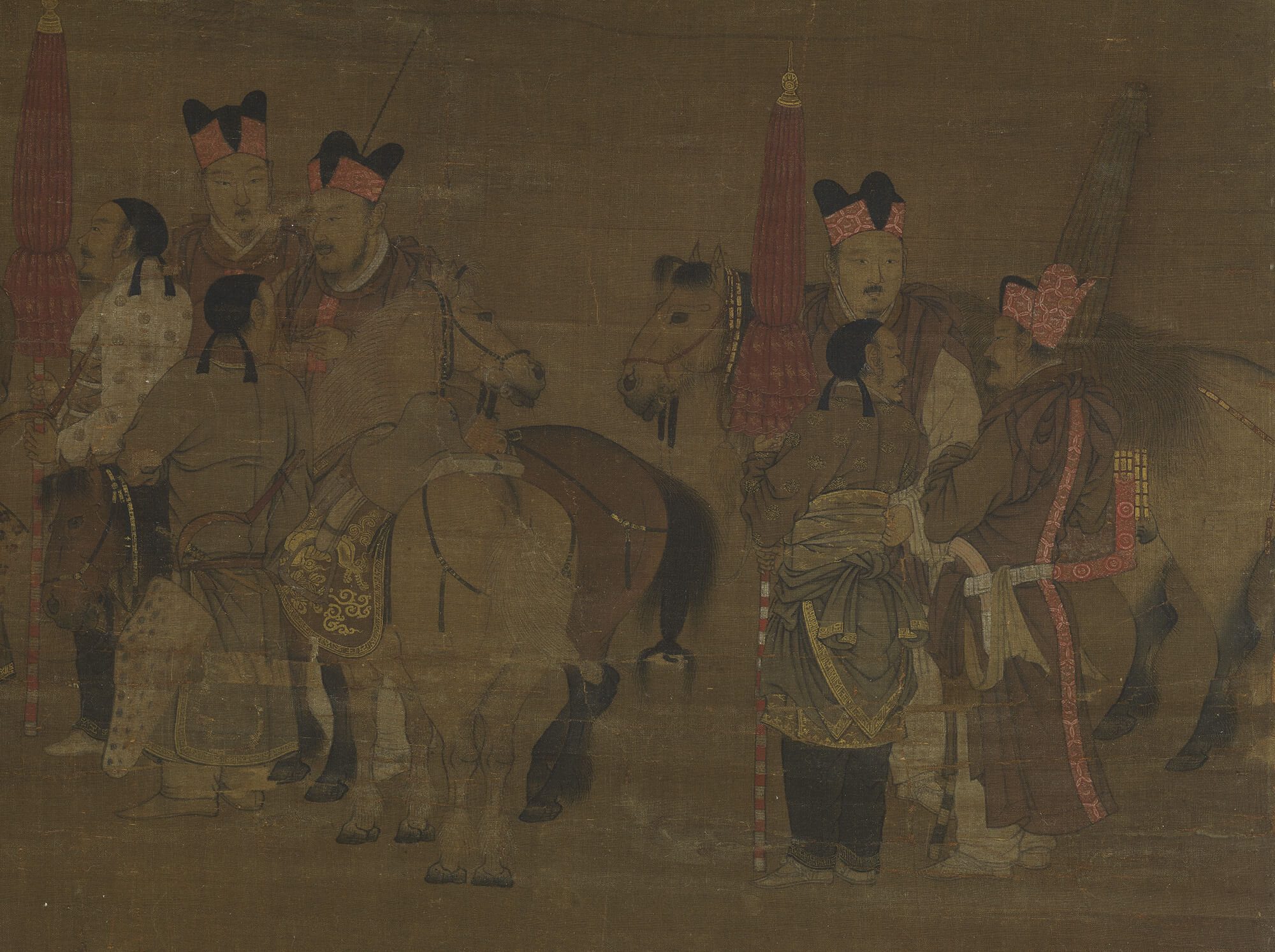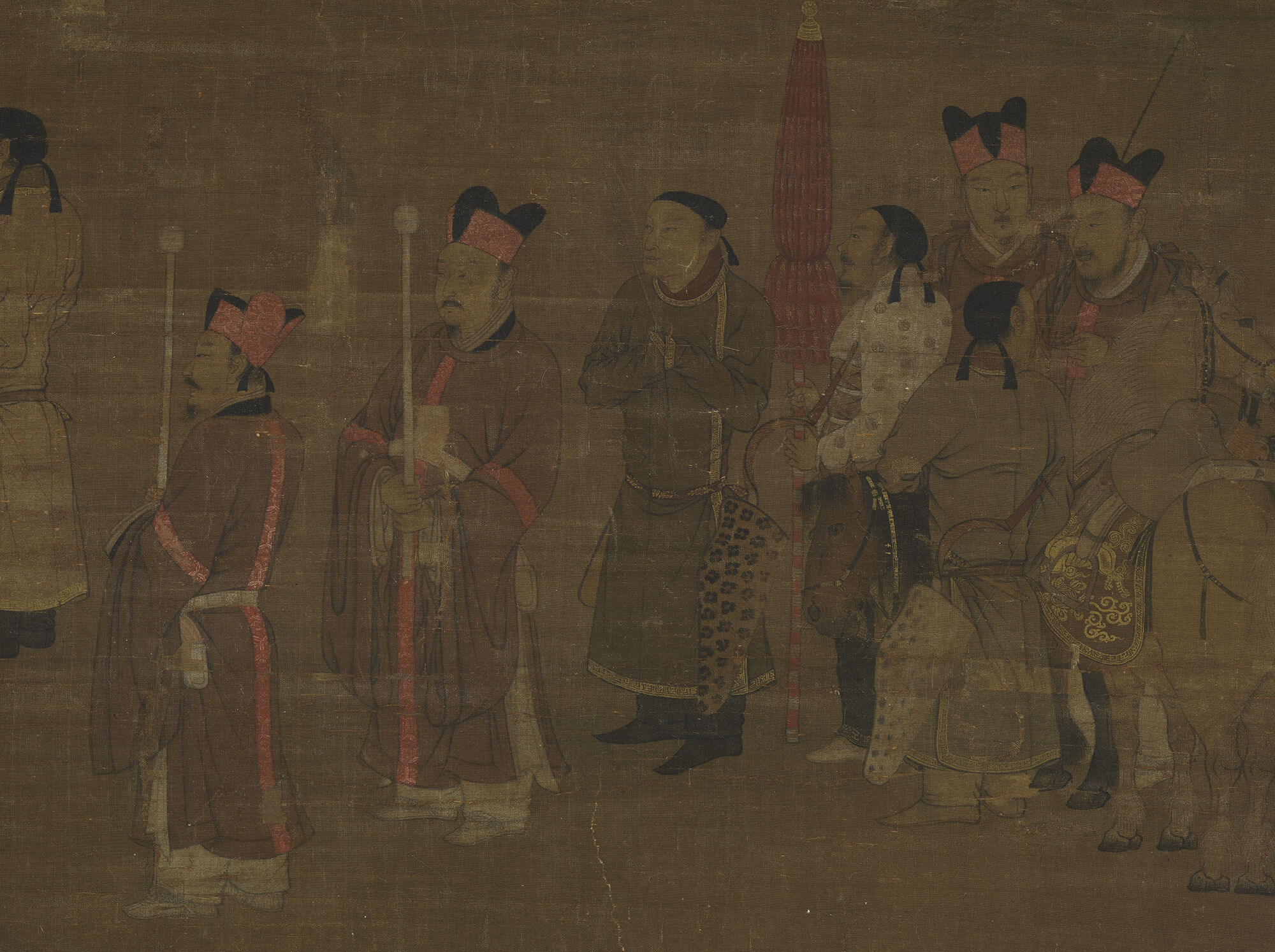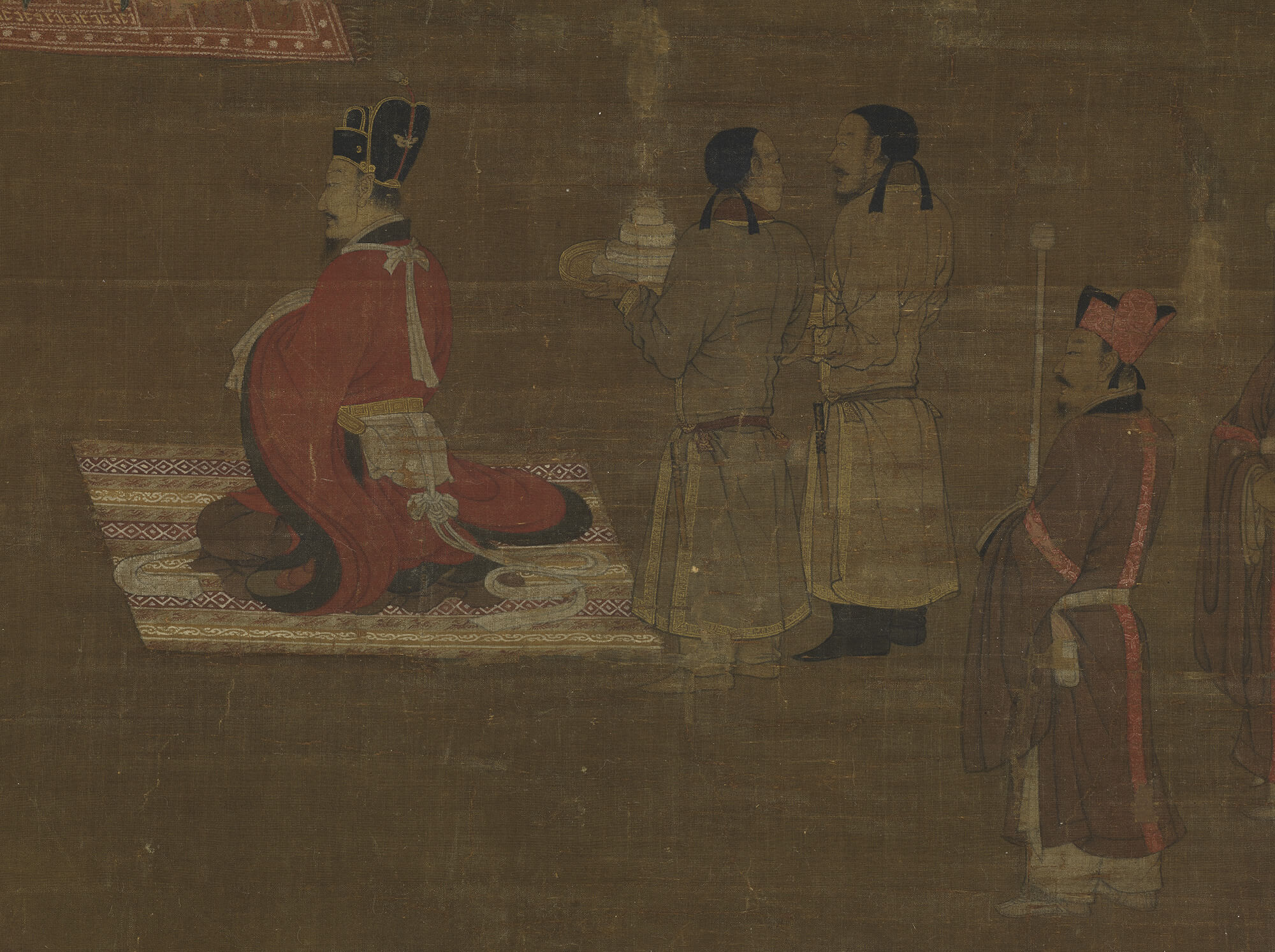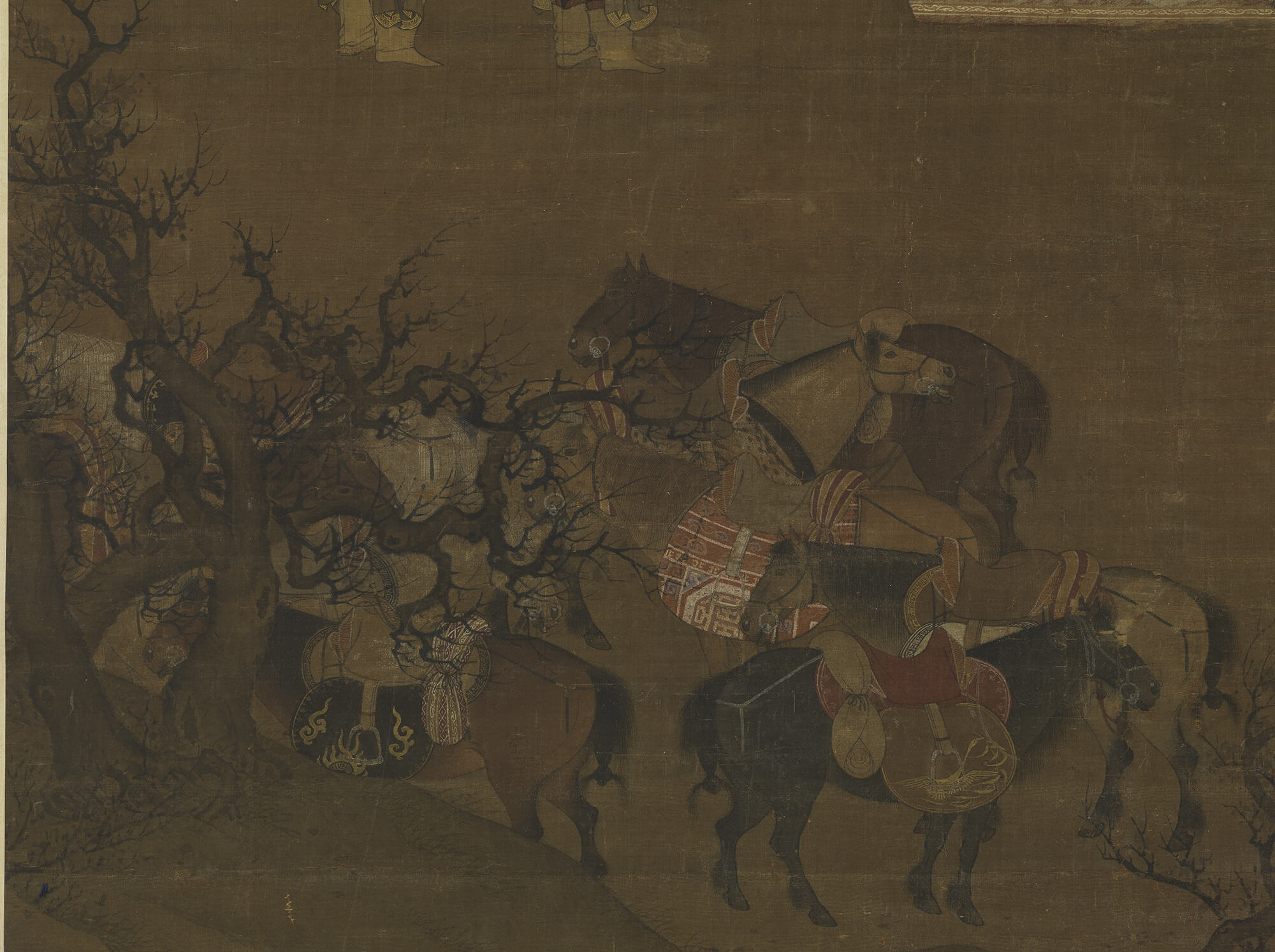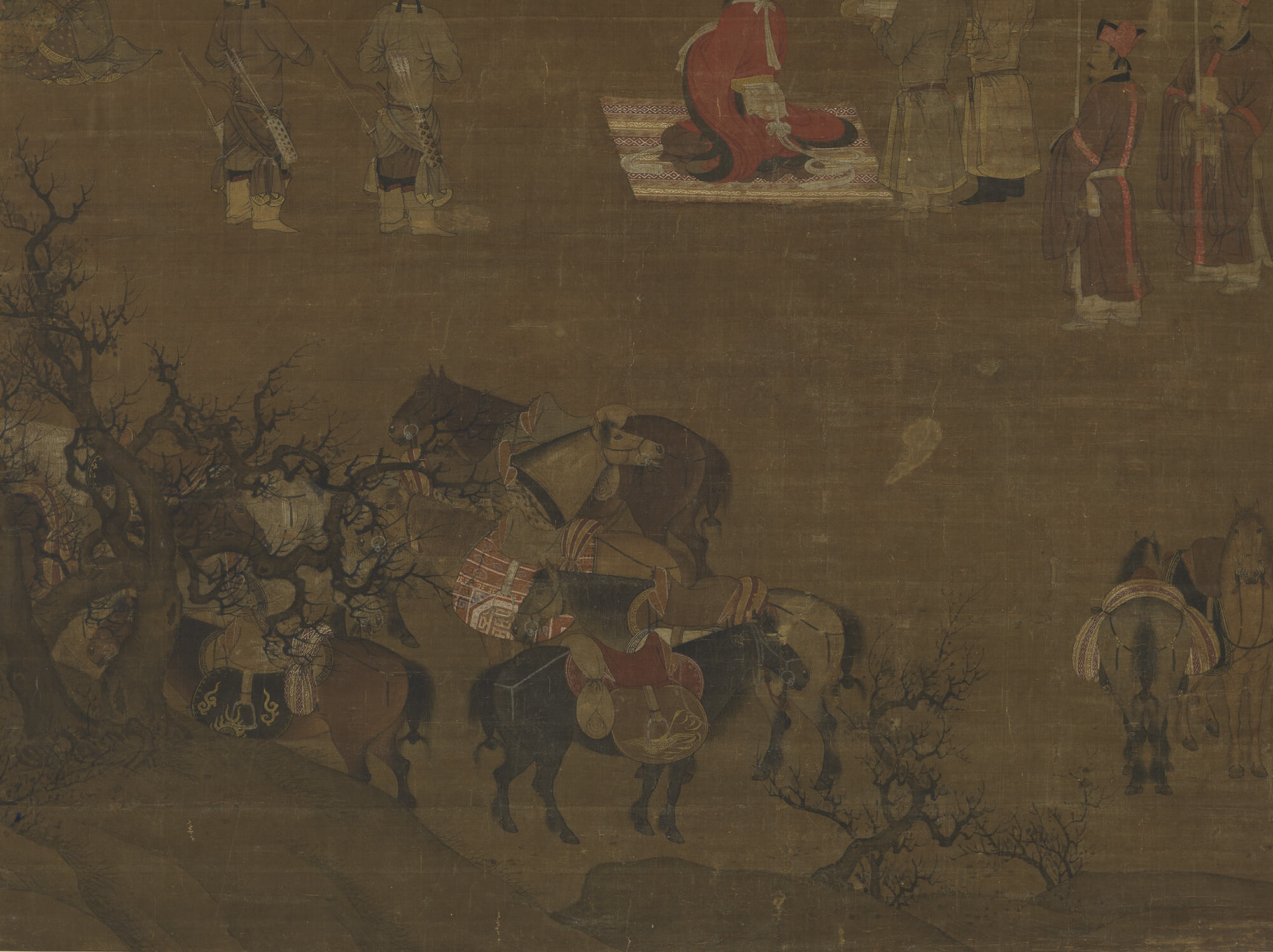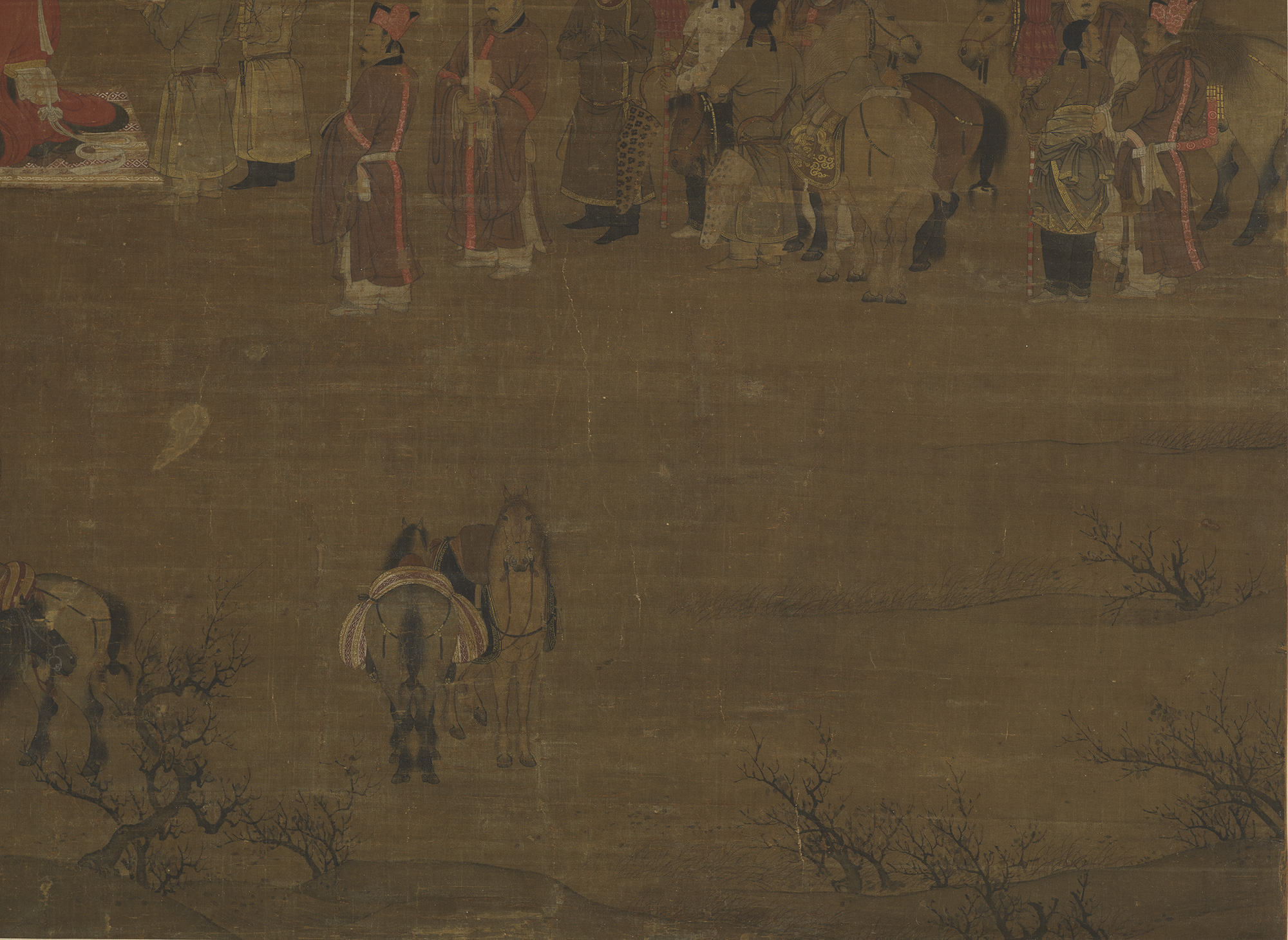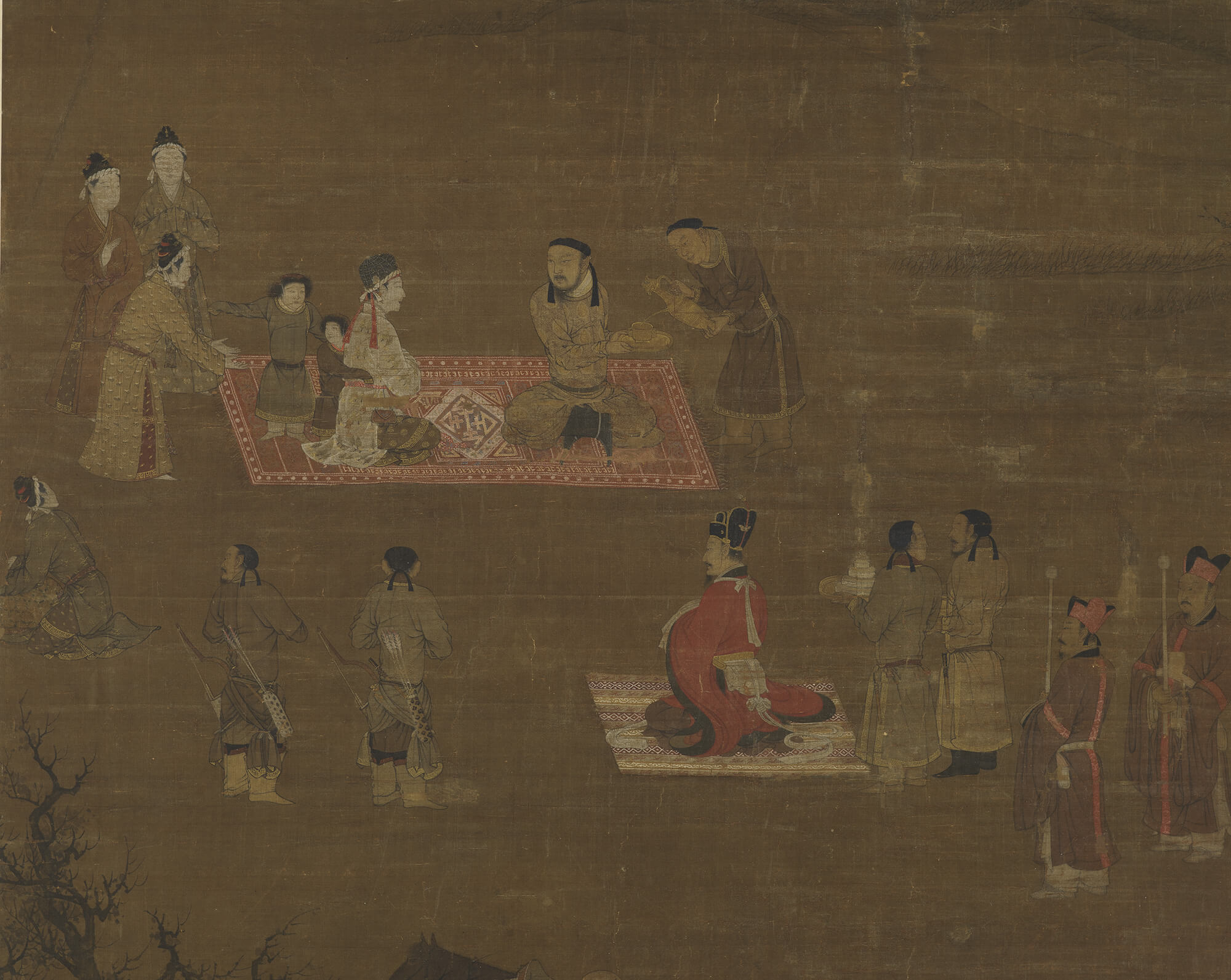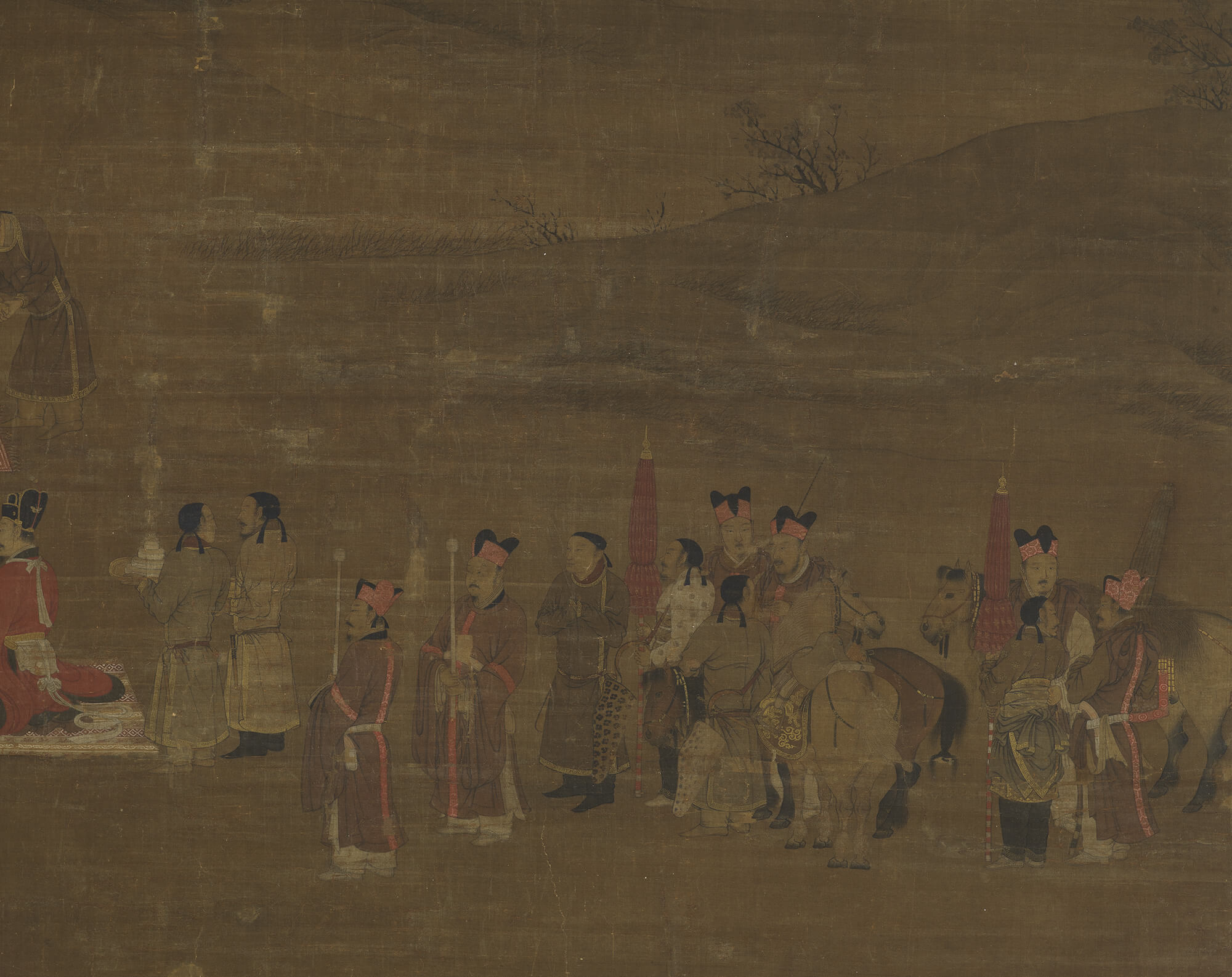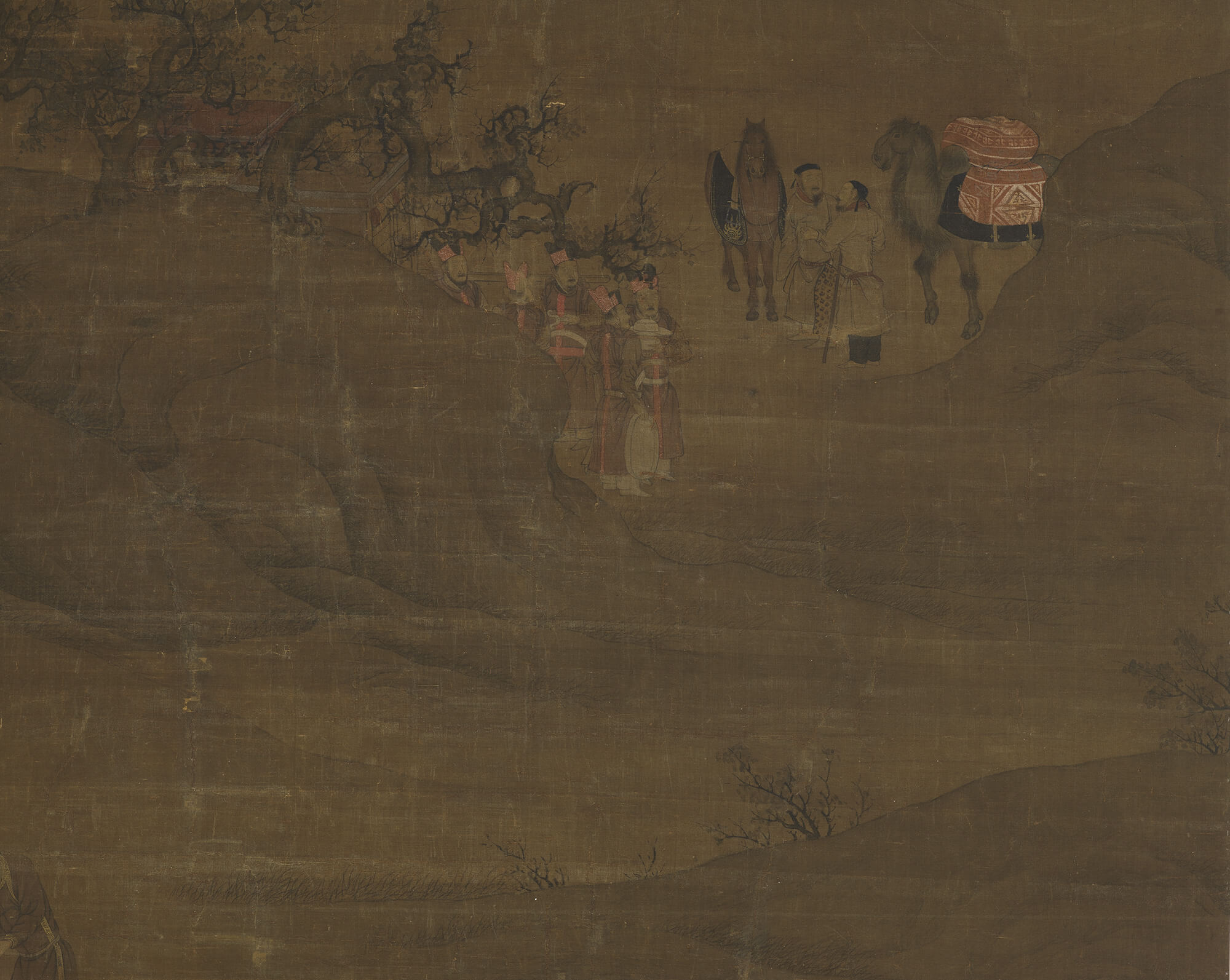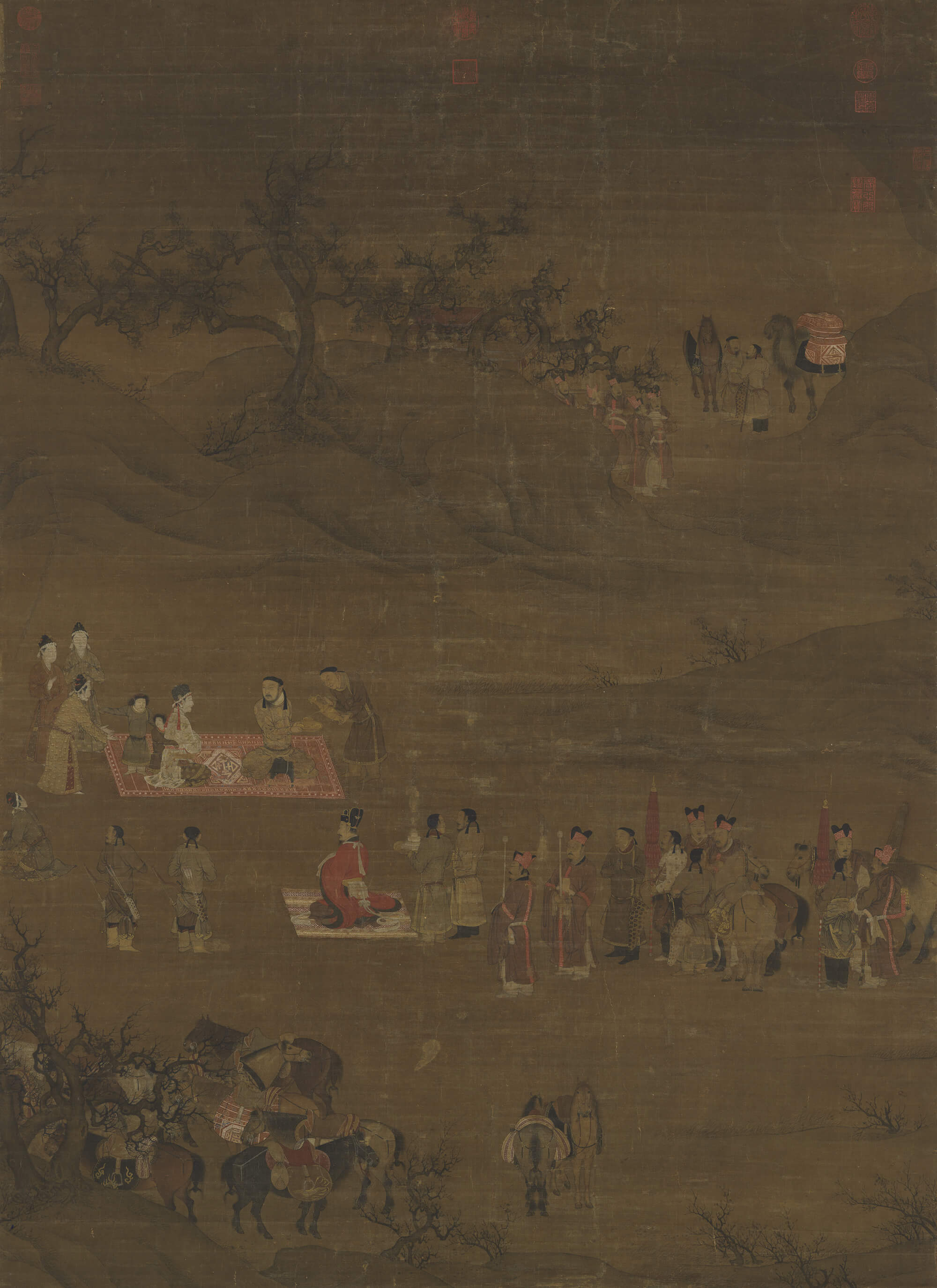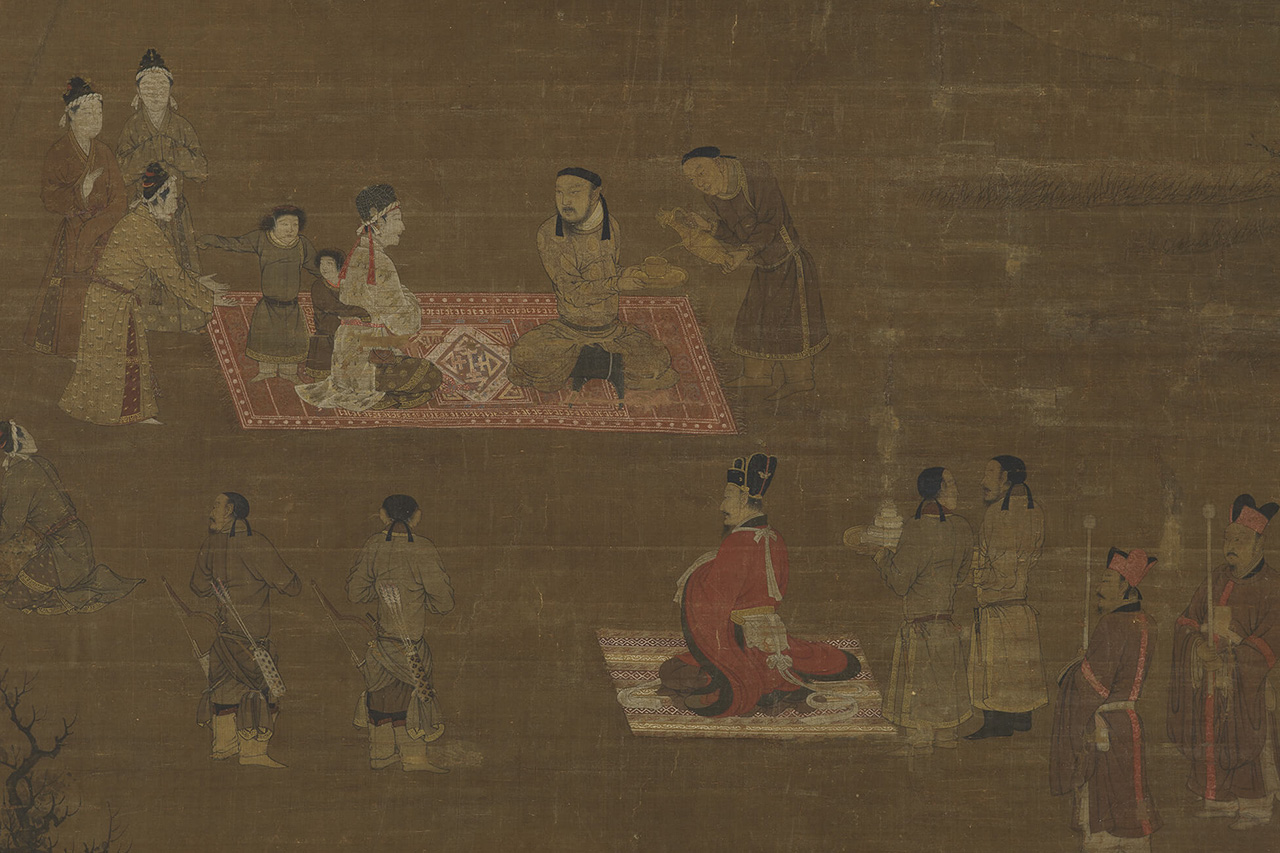A Pleasure for the Eyes and Soul: Pictures for Entertainment
Setting aside the solemn directive of " Enlightening through Education and upholding social relations," let us immerse ourselves in the images and imagine or simply feel the joy they bring out in these literary, theatrical, and novelistic storylines. This pleasure may be the central appeal of narrative paintings. It is found in the melancholy of torn loyalties between nation and family in Lady Wenji's Return to China, the ambiguity and risk in the first awakening of love in The Romance of the Western Chamber, and the sense of liberation in Returning Home from unfulfilled ambitions and the unwillingness to debase oneself leading to retirement from official work. These artists, having transformed all kinds of plots and texts into captivating images, offer a visually delightful and emotionally resonant perspective on understanding these stories.
- Lady Wenji's Return to China
- Attributed to Li Tang, Song dynasty
- Silk
This album depicts the tumultuous life of the female scholar Cai Wenji (162–229 CE) from the Eastern Han dynasty. Taken prisoner by foreign tribesmen during a riot, she was forcibly wed to the Southern Xiongnu "Wise Prince of the Left" and gave birth to two sons. Twelve years later, Cao Cao (115-220) dispatched an envoy to ransom her back to Han territory. It is said that she composed a qin melody inspired by the acoustics of the foreign hujia flute, accompanied by poems reflecting her life experiences, which is now known as the Eighteen Songs of a Nomad Flute. Cai Wenji's story became popular, inspiring various novels and operas, while the lyrics of Eighteen Songs was rewritten by generations of later authors. The upper half of the album leaf features the Tang dynasty version of the text by Liu Shang (c. 727–805), paired with matching illustrations below in a "synchronous text and image" format as a serialized narrative painting. The Eighteen Songs of a Nomad Flute is not a work that strictly espouses the Confucian ideals of loyalty and filial piety, and Cai Wenji's choices were somewhat controversial. The dramatic contours of her story have evoked sympathy from many viewers and inspired artists to recreate its scenes and capture the spirit of its characters. These paintings were brought about by the zeitgeist of the Song-Jin conflict, offering an immersive visual pleasure akin to today's picture books.
While traditionally attributed to Li Tang (c. 1049–after 1130), the painting's style differs from his surviving works. Despite significant damage to the surface, its meticulous craftsmanship can still be seen. Even the patterns on the small figures' clothing are finely rendered, suggesting that this may be the work of a slightly later Southern Song court painter.
- Lady Wenji's Return to China
- Attributed to Chen Juzhong, Song dynasty
- Silk
Unlike the Lady Wenji's Return to China album attributed to Li Tang, which relates Cai Wenji's experiences across eighteen leaves, this hanging scroll of the same subject conveys the narrative through a single scene. The artist represents a passage similar to the "Parting with Sorrow" scene from Lady Wenji's Return, portraying the husband and wife drinking a farewell toast as the family is about to separate. Unlike in the album leaf, where nearly everyone is weeping, this scroll presents the spouses seated on a carpet in a scene of unusual calm. Only the younger son clings to Wenji's waist and refuses to let go, while the others seem to repress their feelings in an act of solemn self-restraint.
Another notable feature of this painting is the inclusion of a Han emissary alongside a mix of Han and foreign guards, which researchers believe reflects the Song dynasty's position on foreign relations and its diplomatic circumstances. The meticulous depictions of clothing and objects demonstrate close contact with and an understanding of nomadic culture at the time. While the work is traditionally attributed to the late Southern Song court painter Chen Juzhong (active early 13th c.), scholars suggest it may instead be an outstanding court painting of the 12th-century.
Story Introduction: Wenji Returning to Han
During the chaotic late Eastern Han dynasty, Cai Yan (courtesy name Wenji), the daughter of the renowned official Cai Yong, was abducted and married to a Xiongnu chieftain. This marked the beginning of a long and painful life in the north. During this time, she bore two sons and, despite her disdain for the foreign tribe, she felt compassion for her children. One day, a Han envoy brought news that Wenji would be ransomed, which filled her with joy but also sadness at the thought of leaving her young children. Her sons clung to her clothes, unwilling to part, but she was ultimately brought back home. Upon her return, Wenji transformed her 12 years of sorrow into Hujia music that she plaintively played.
